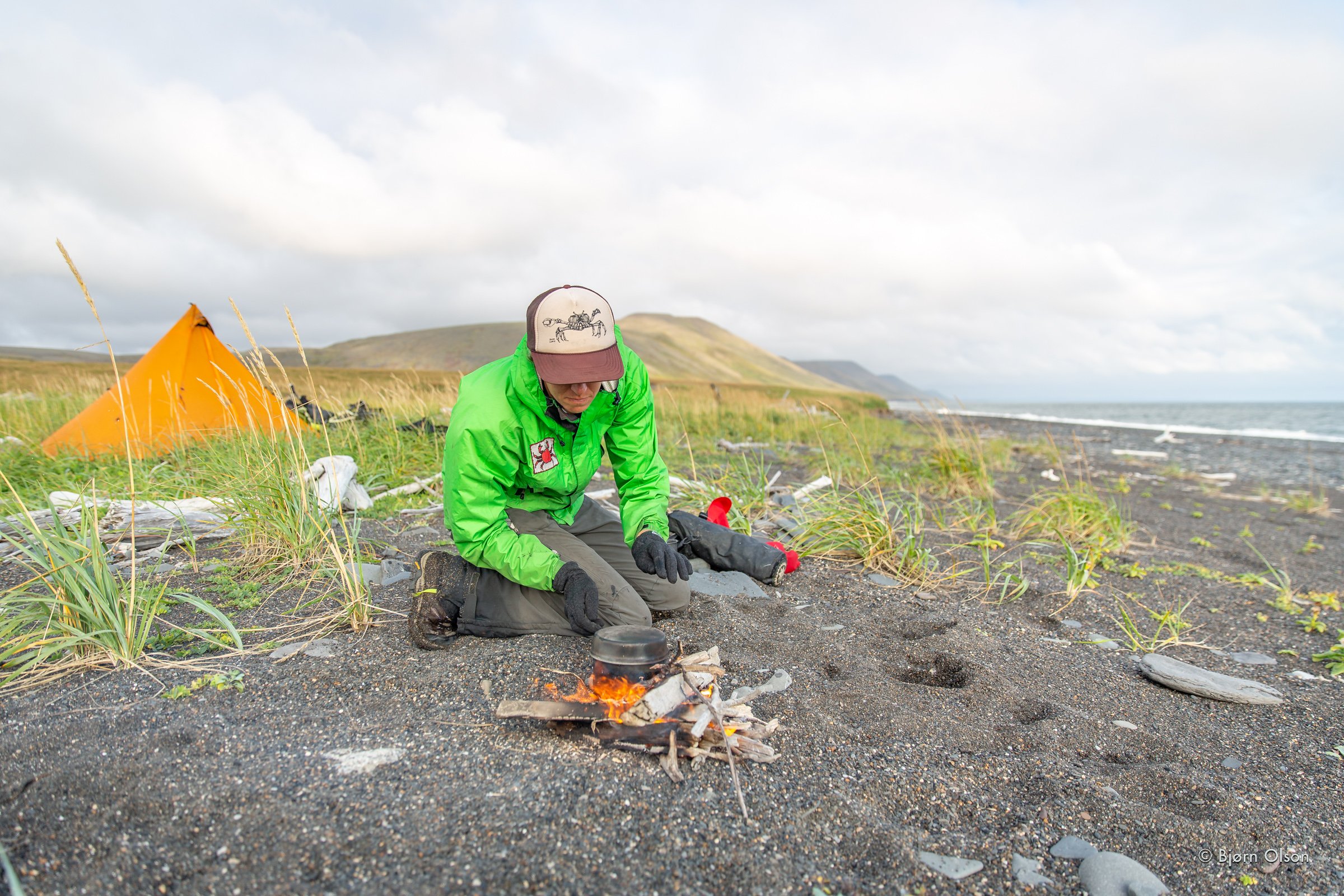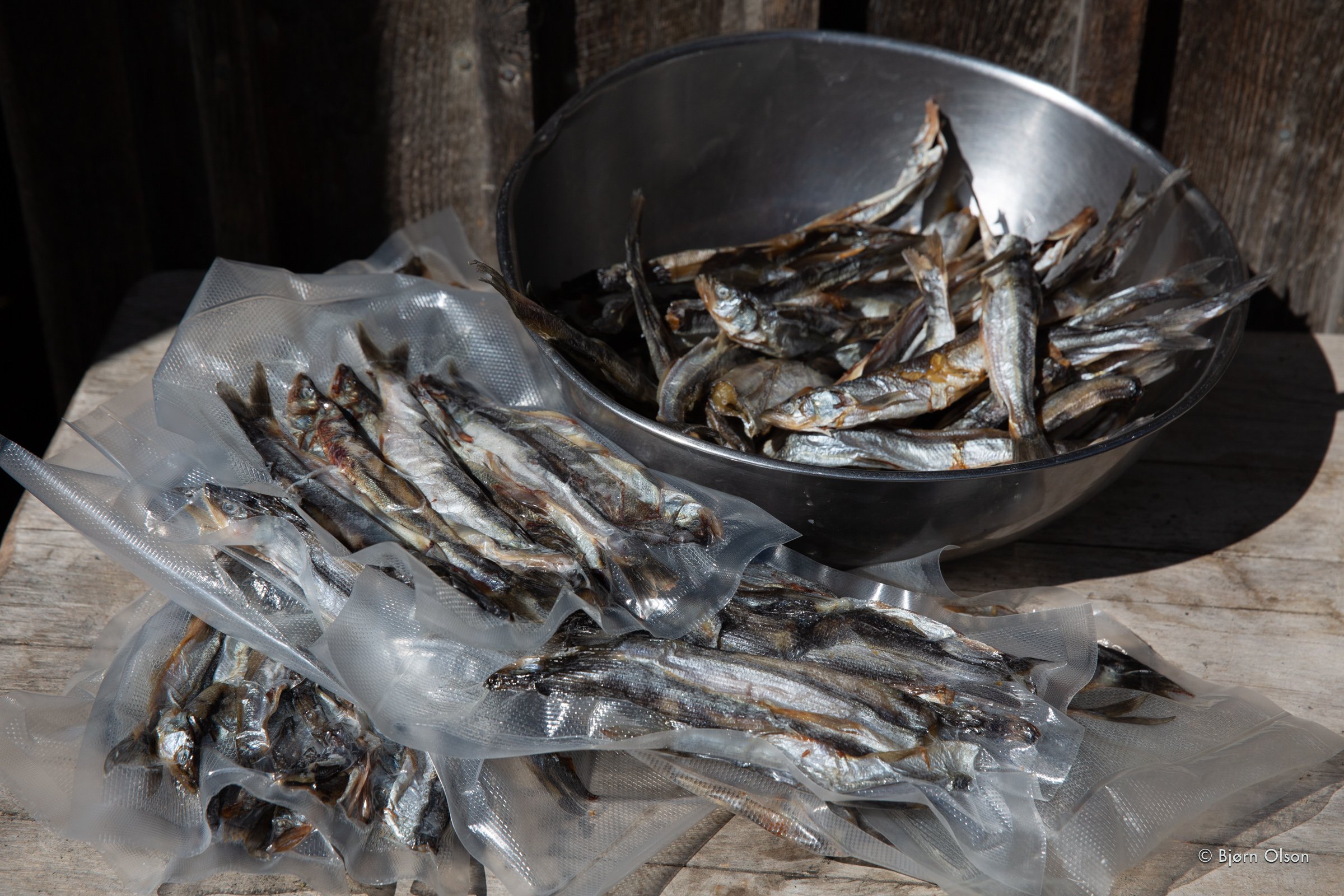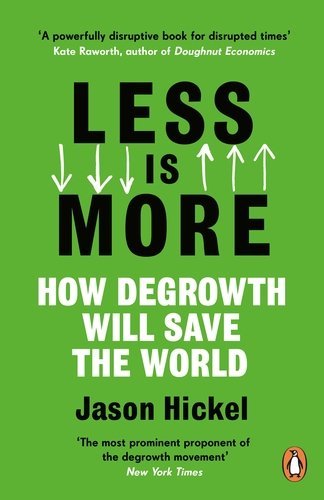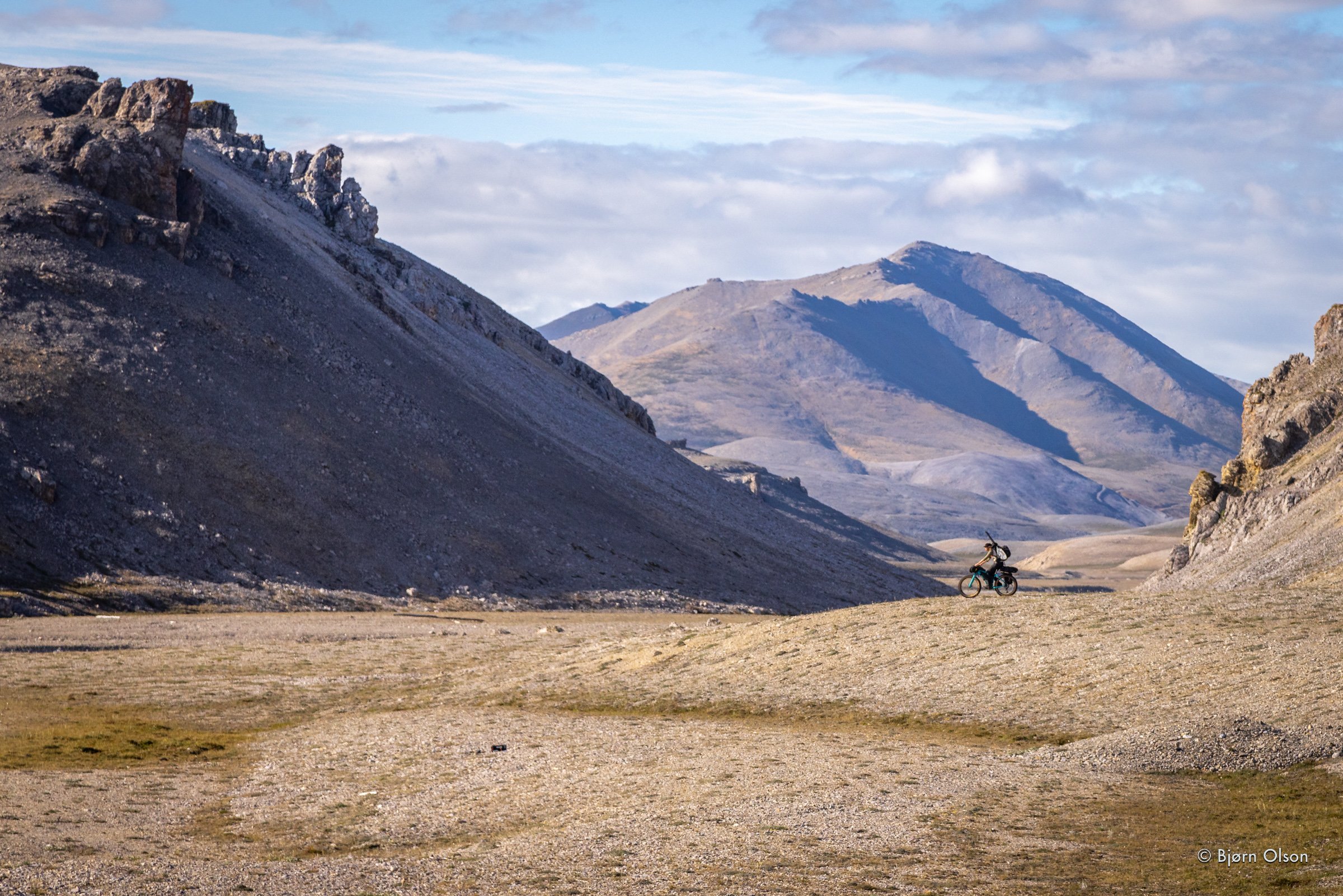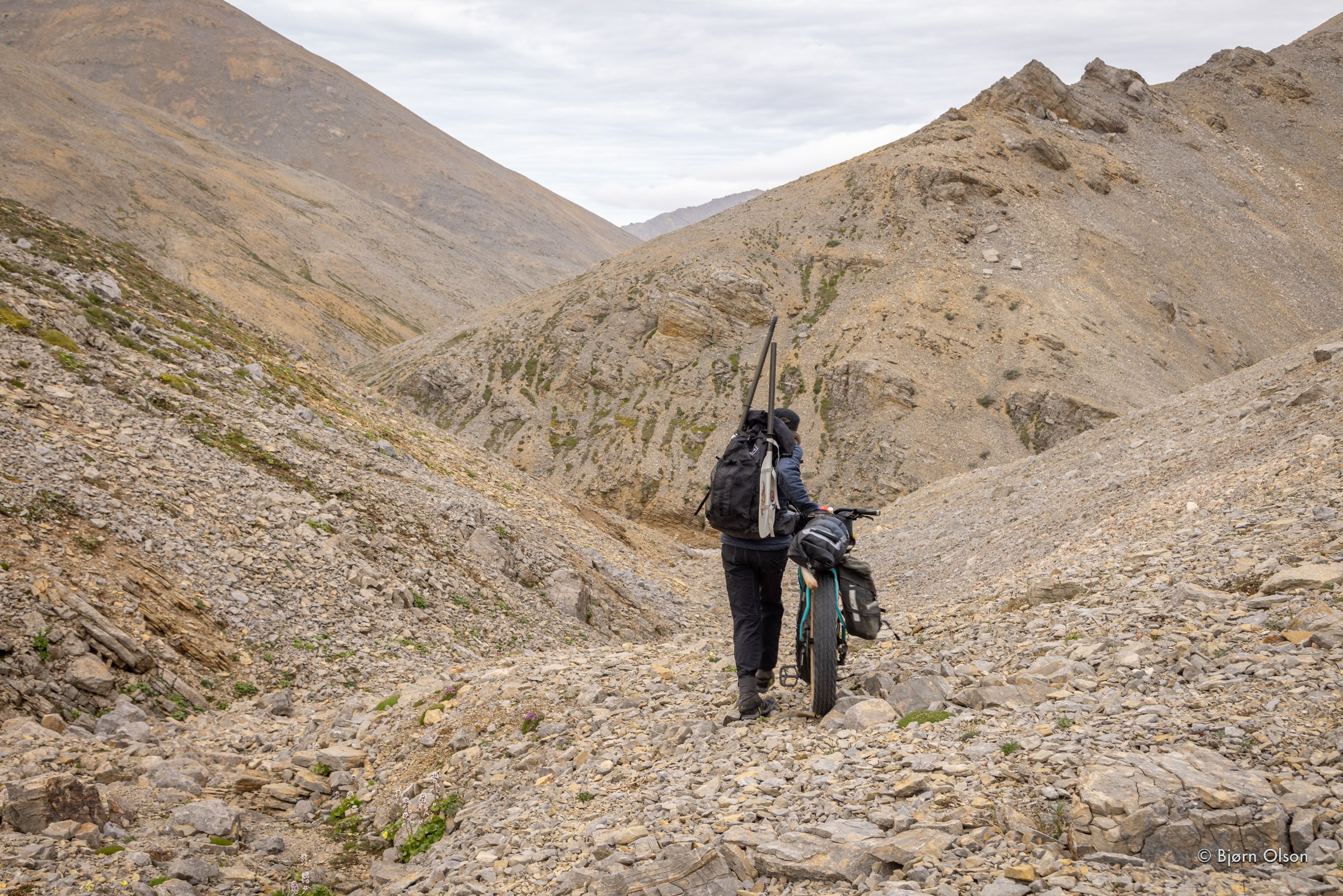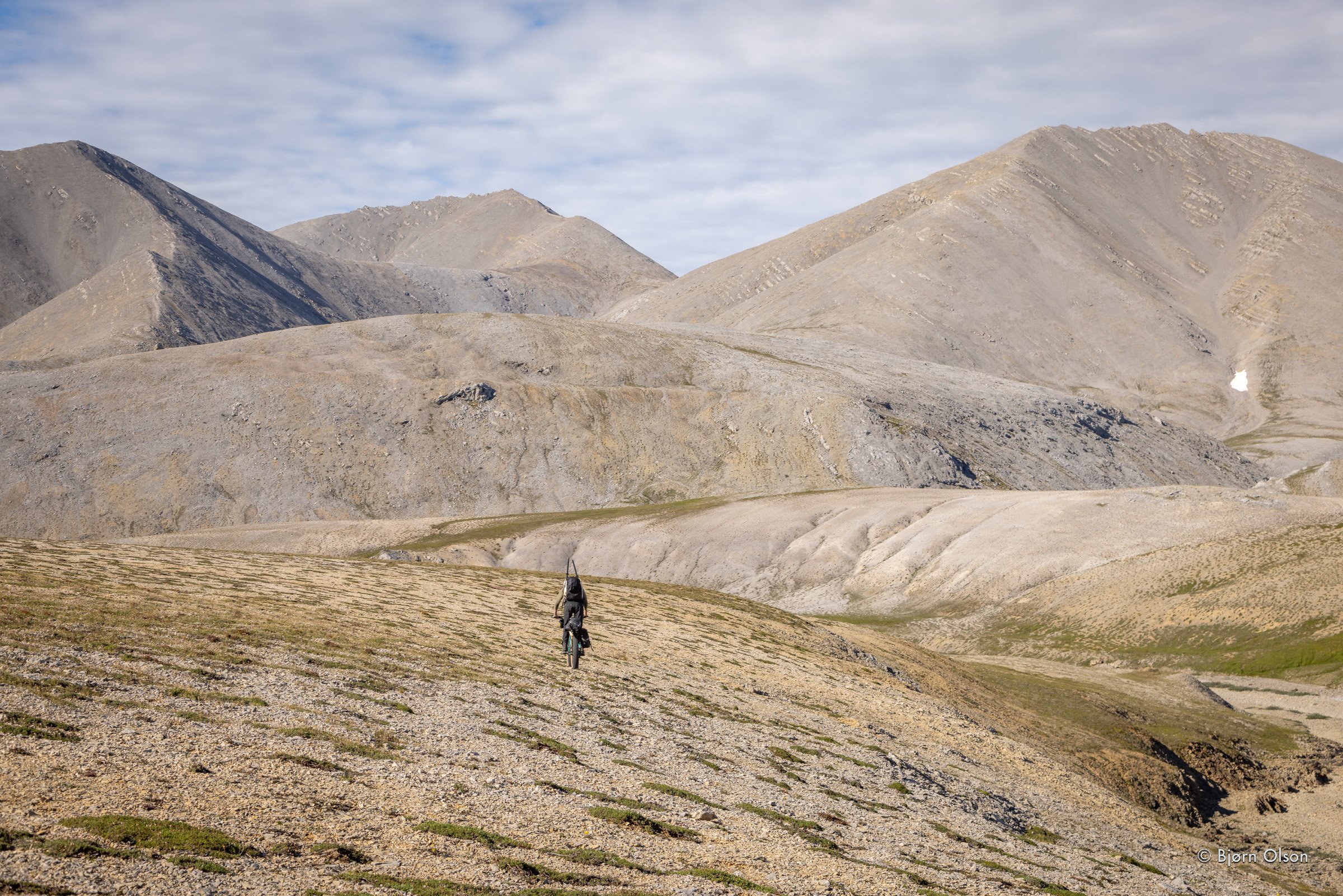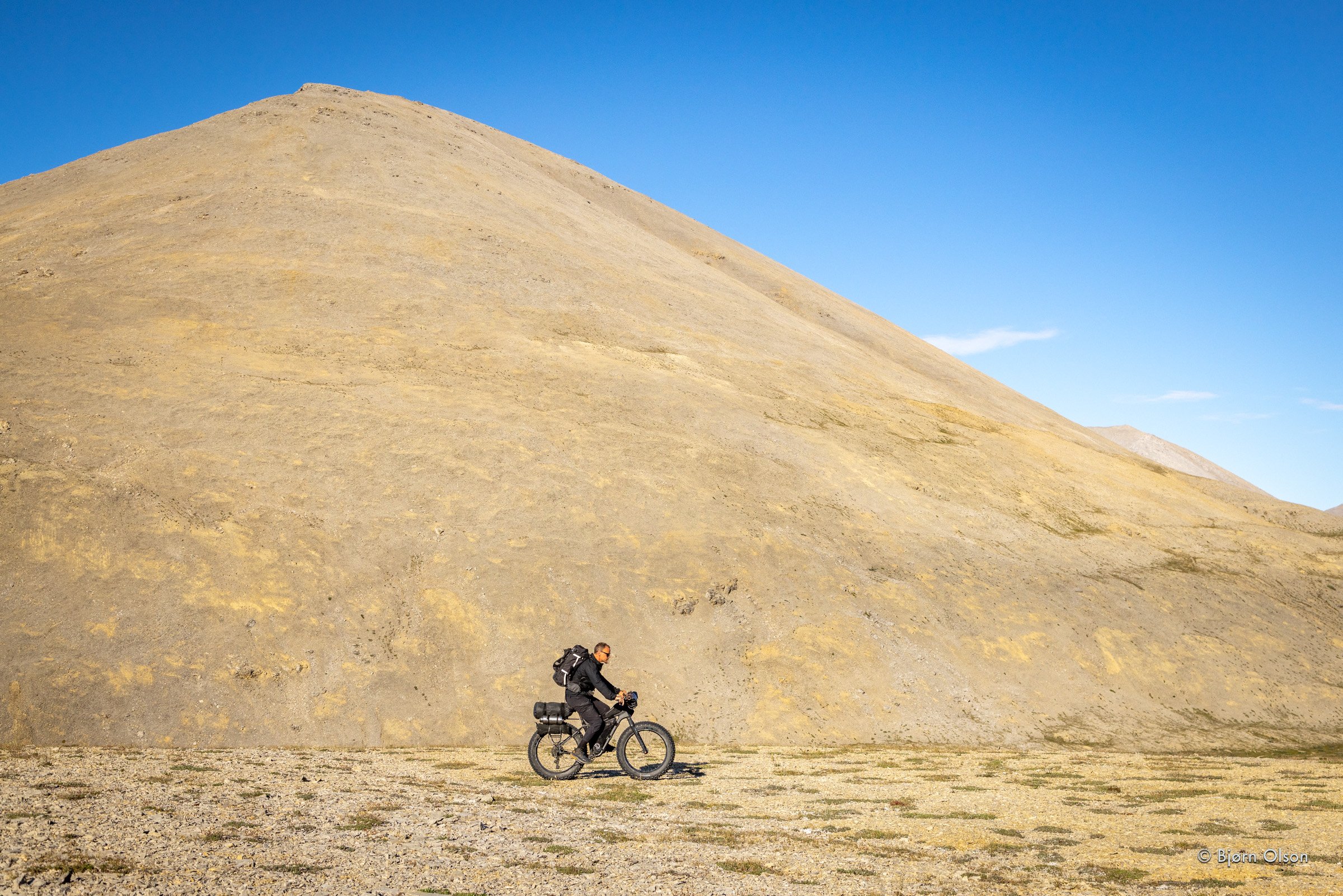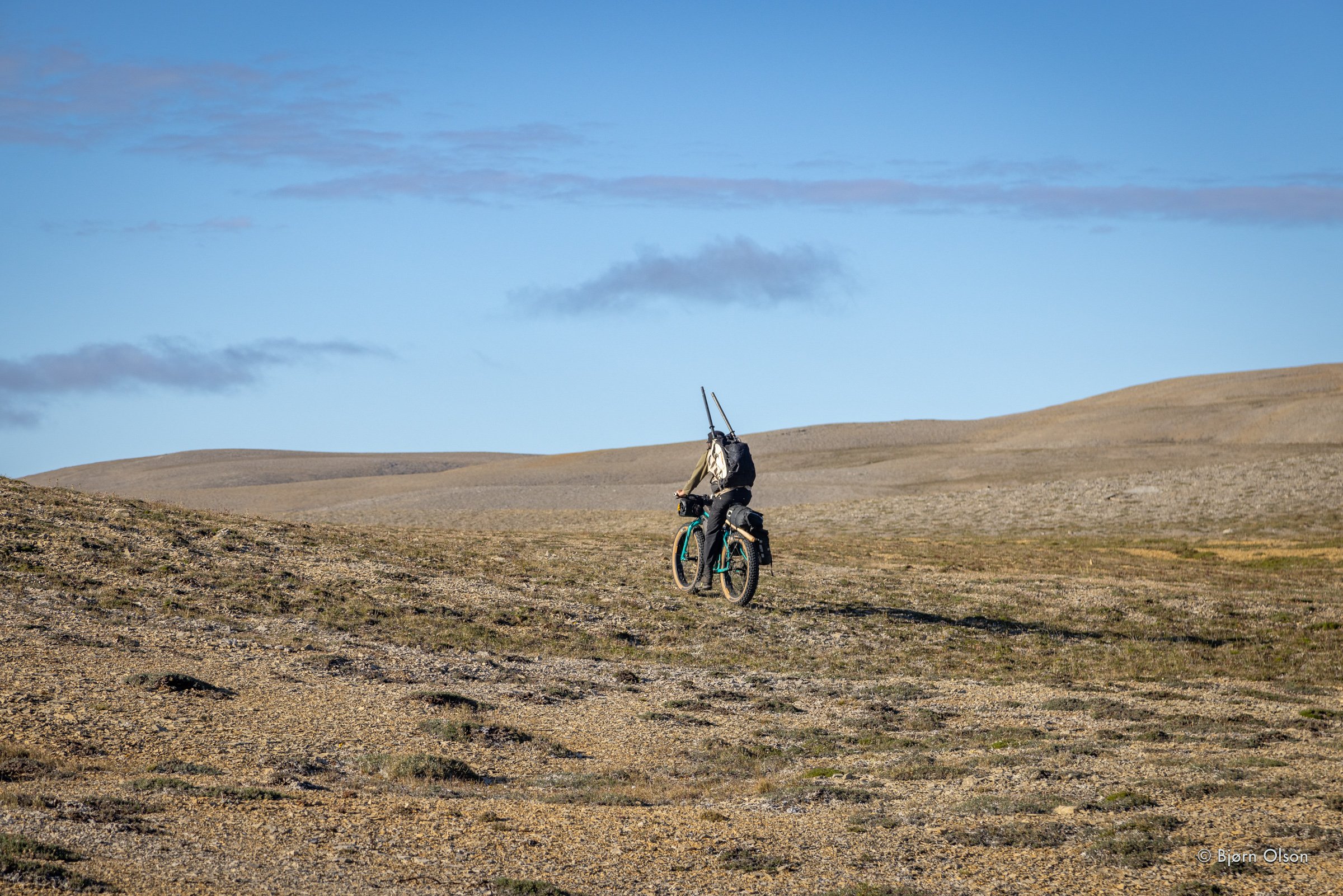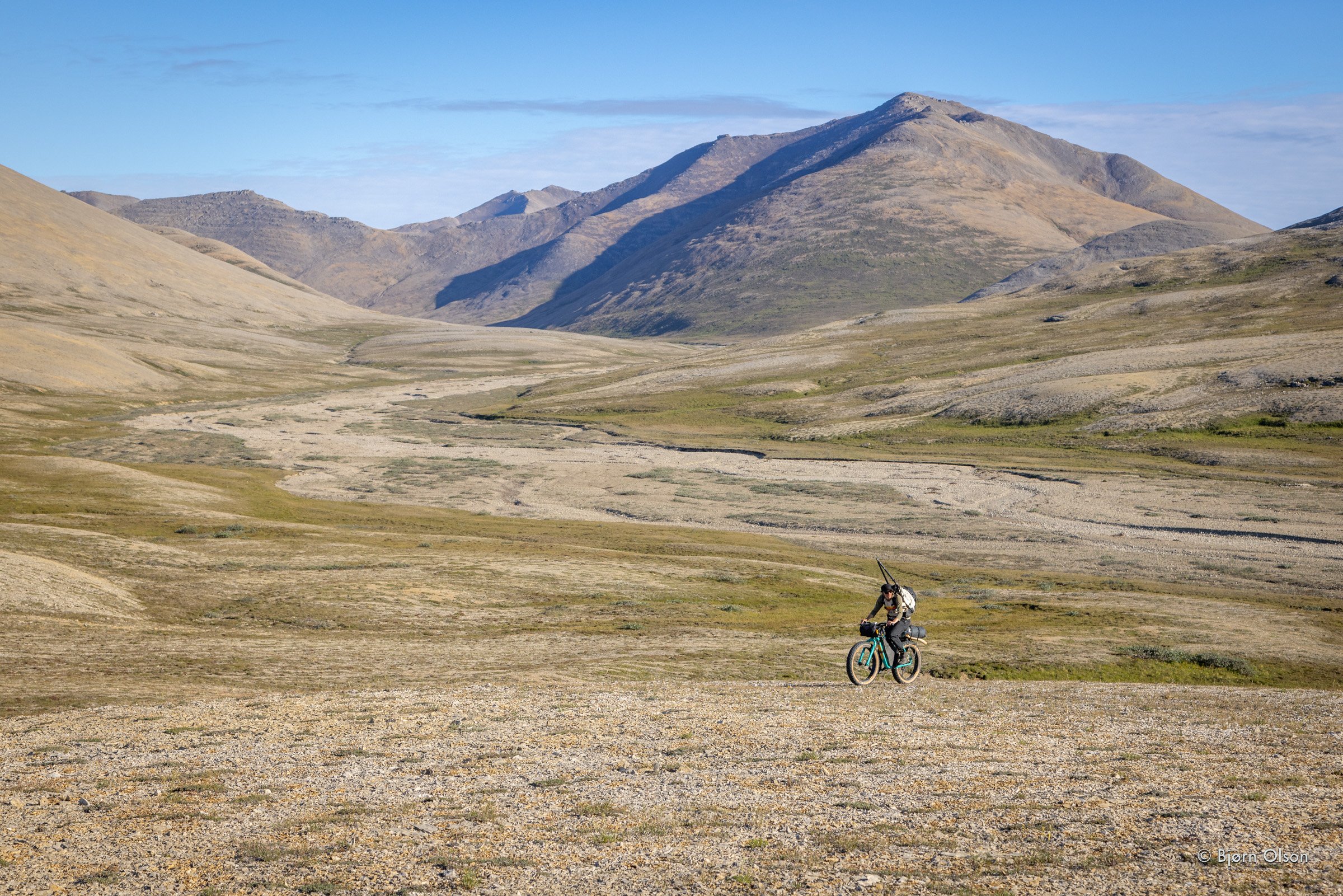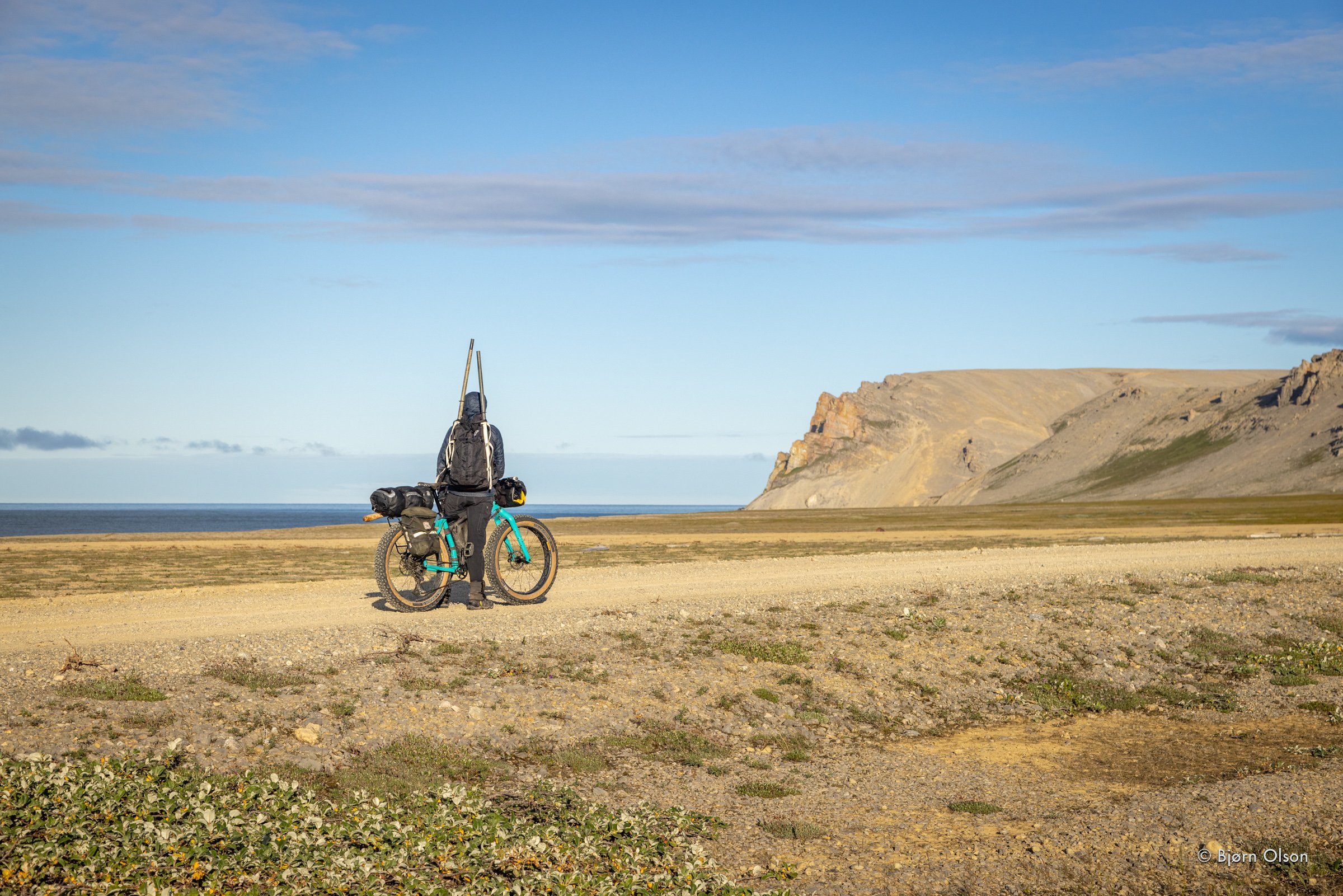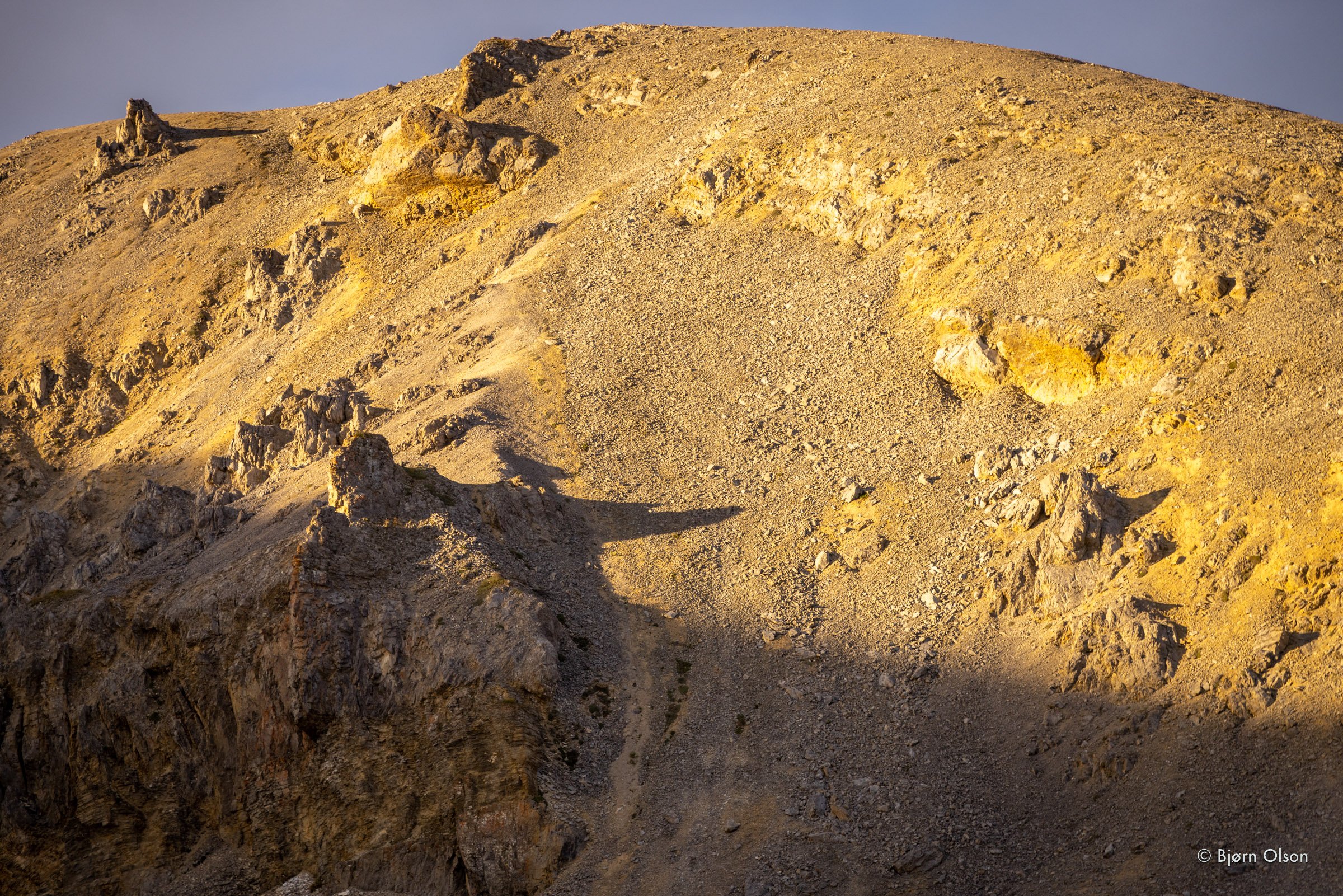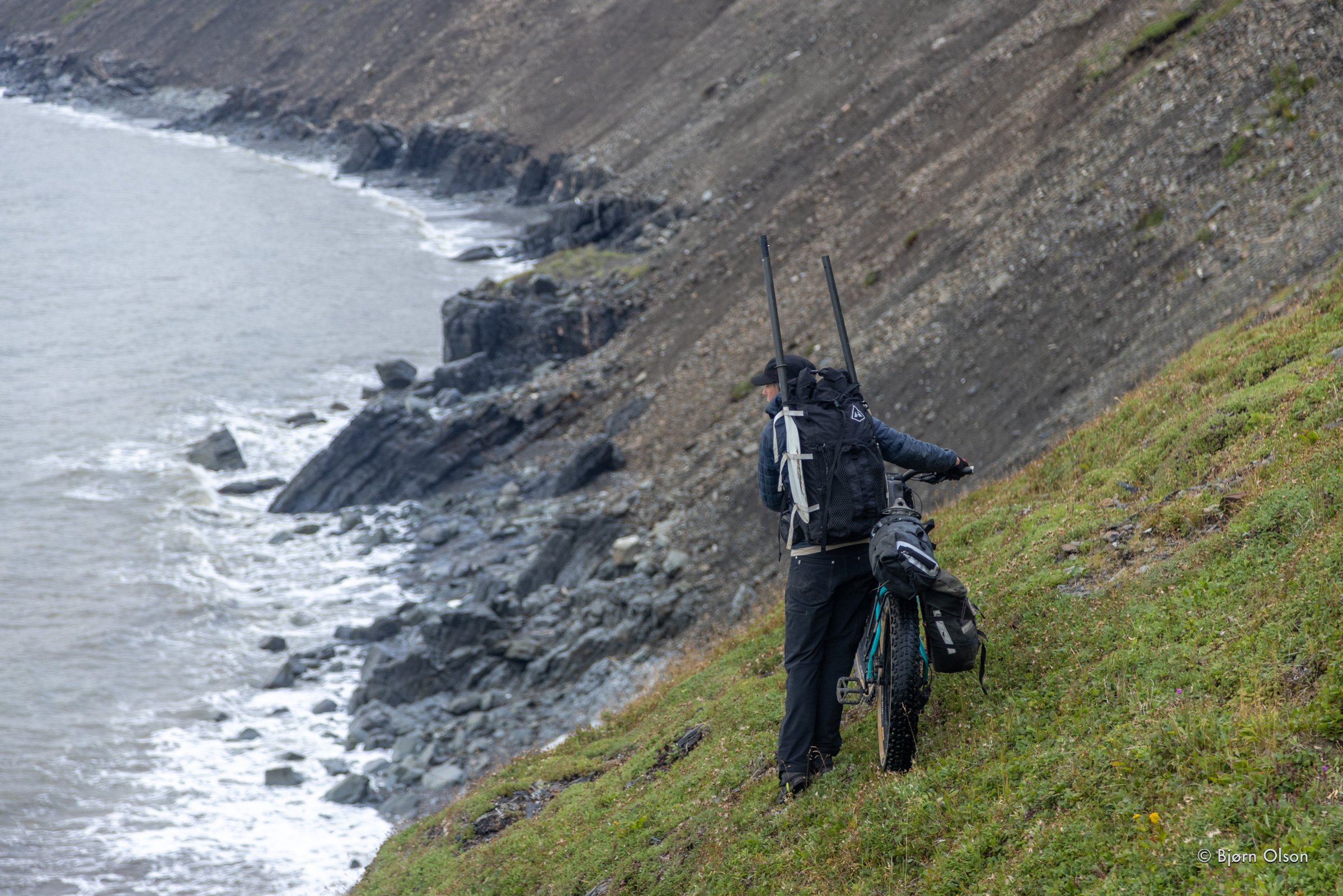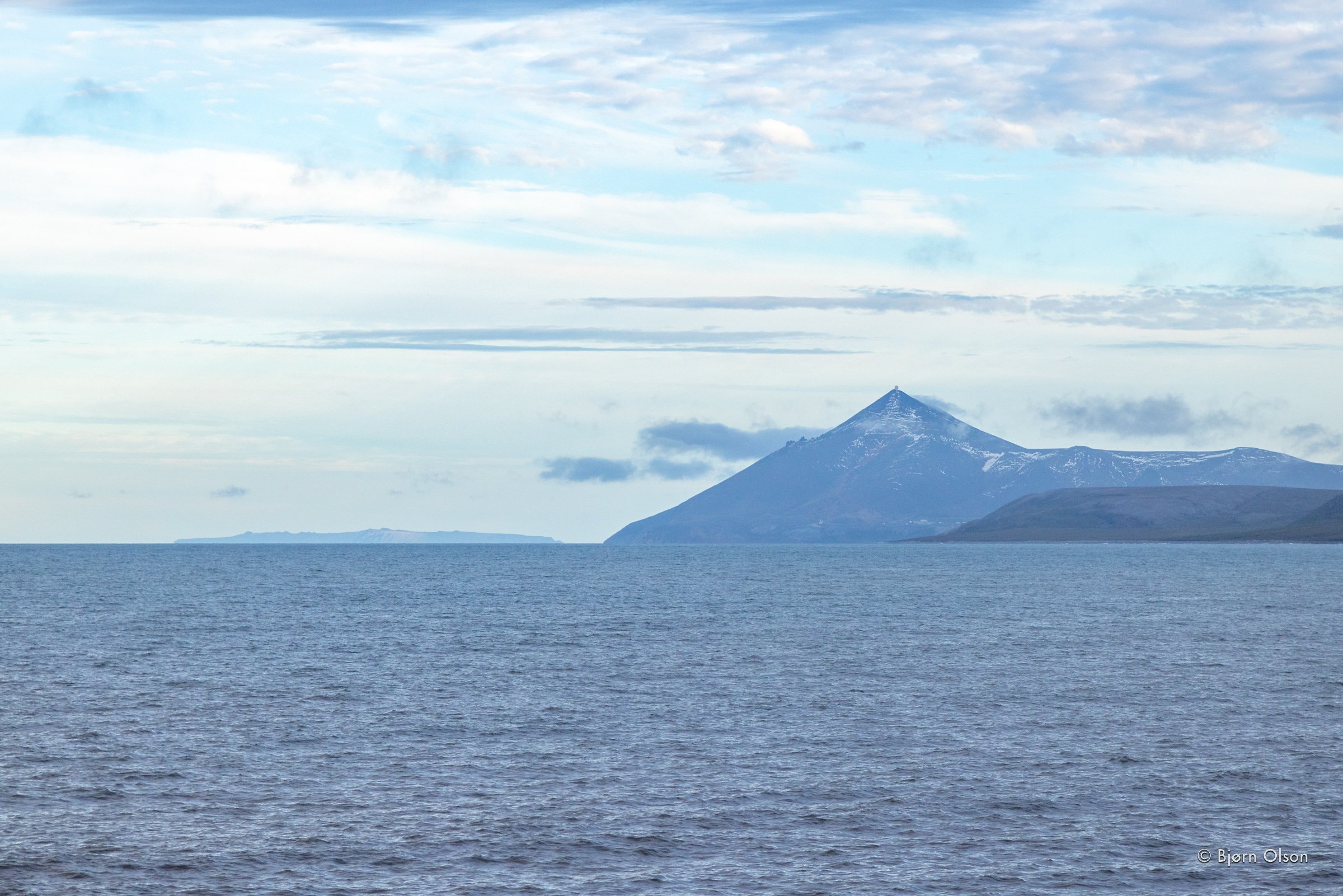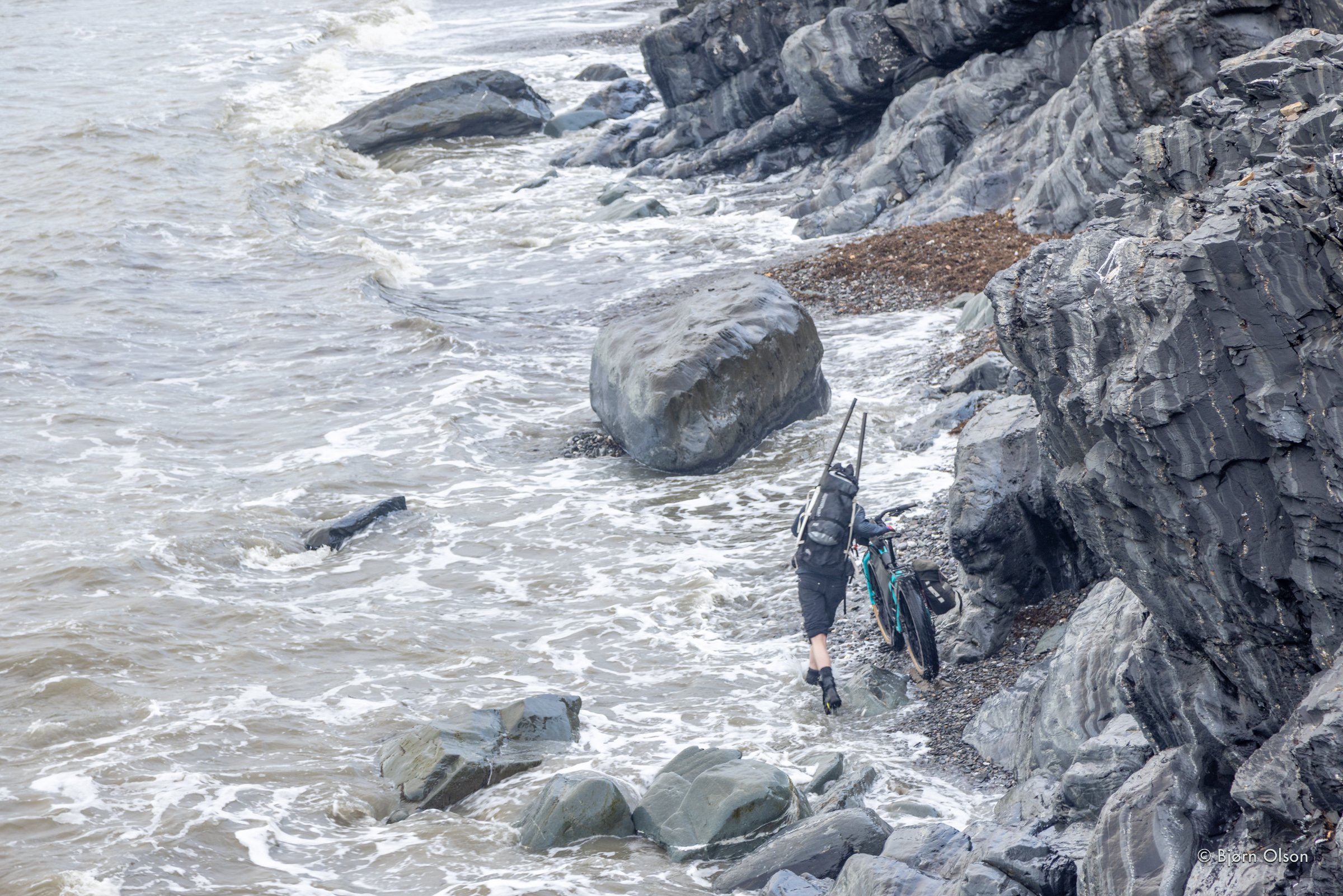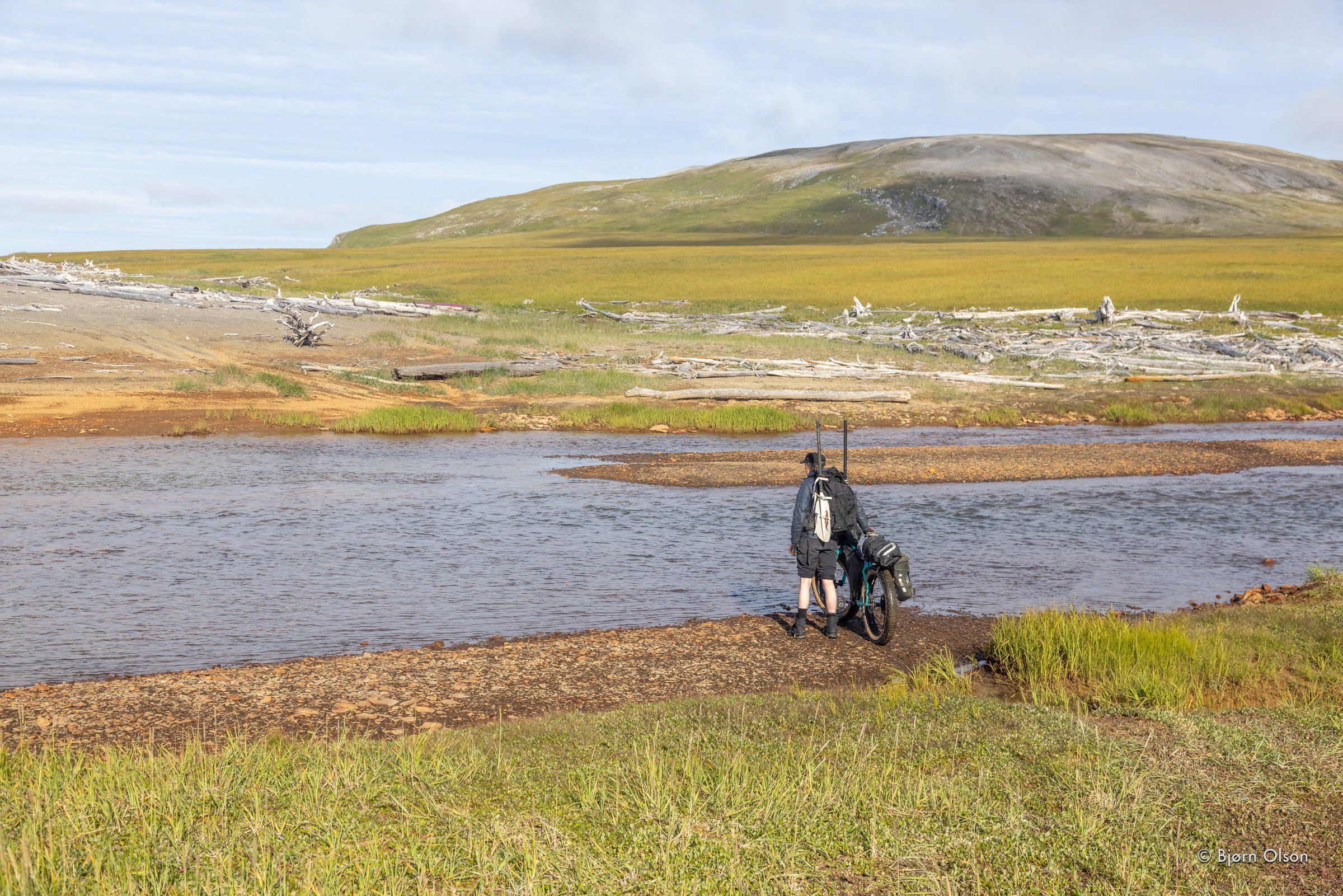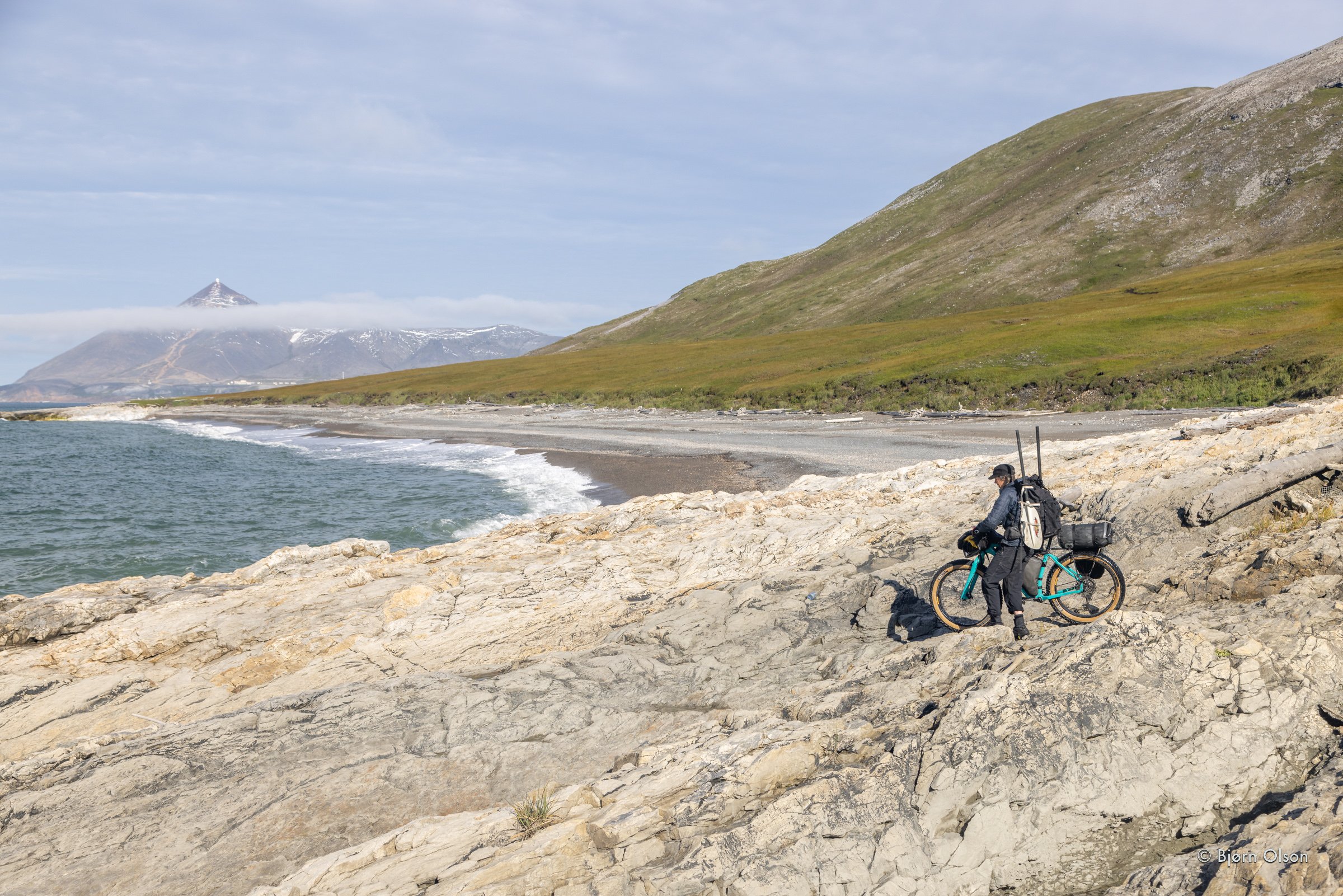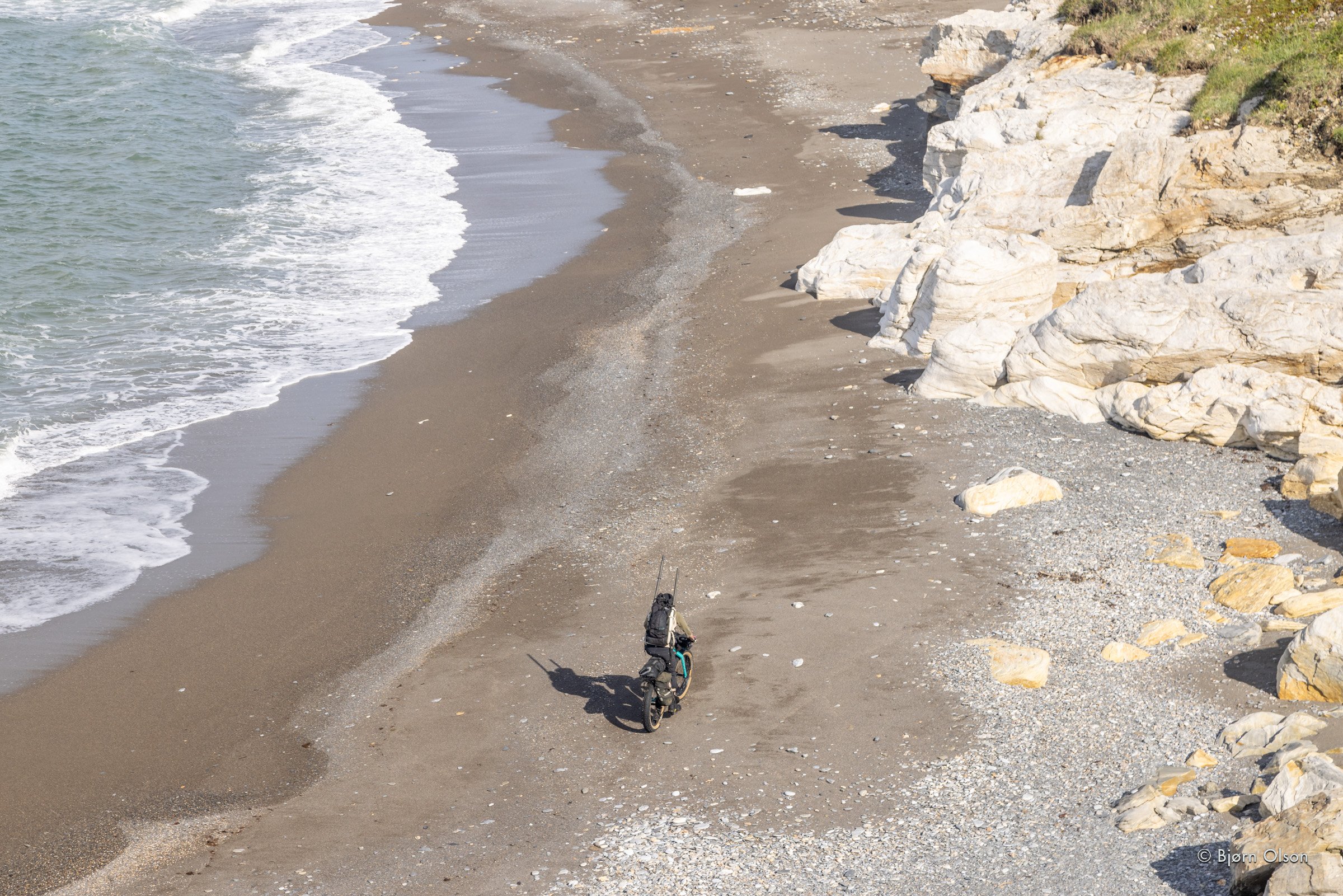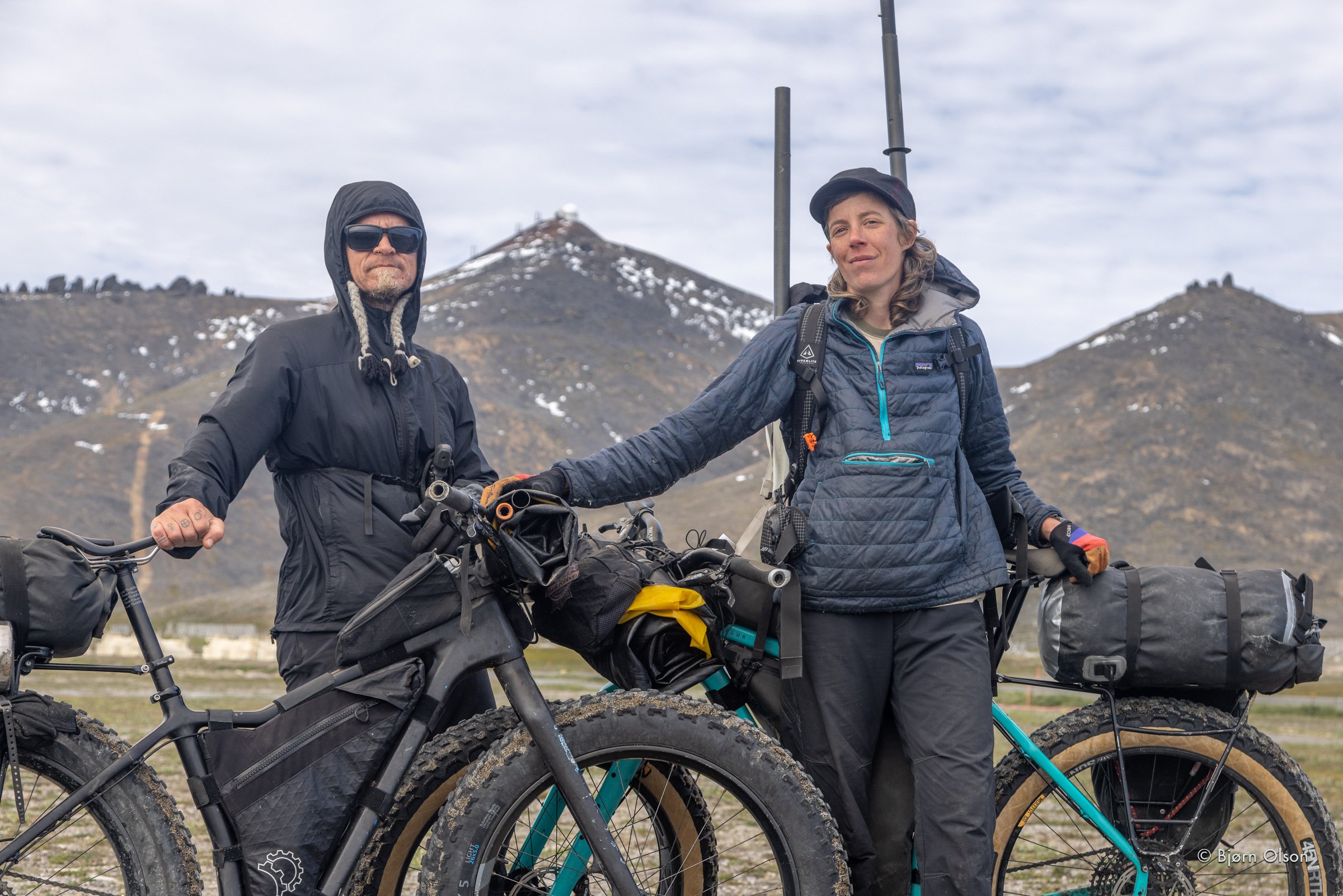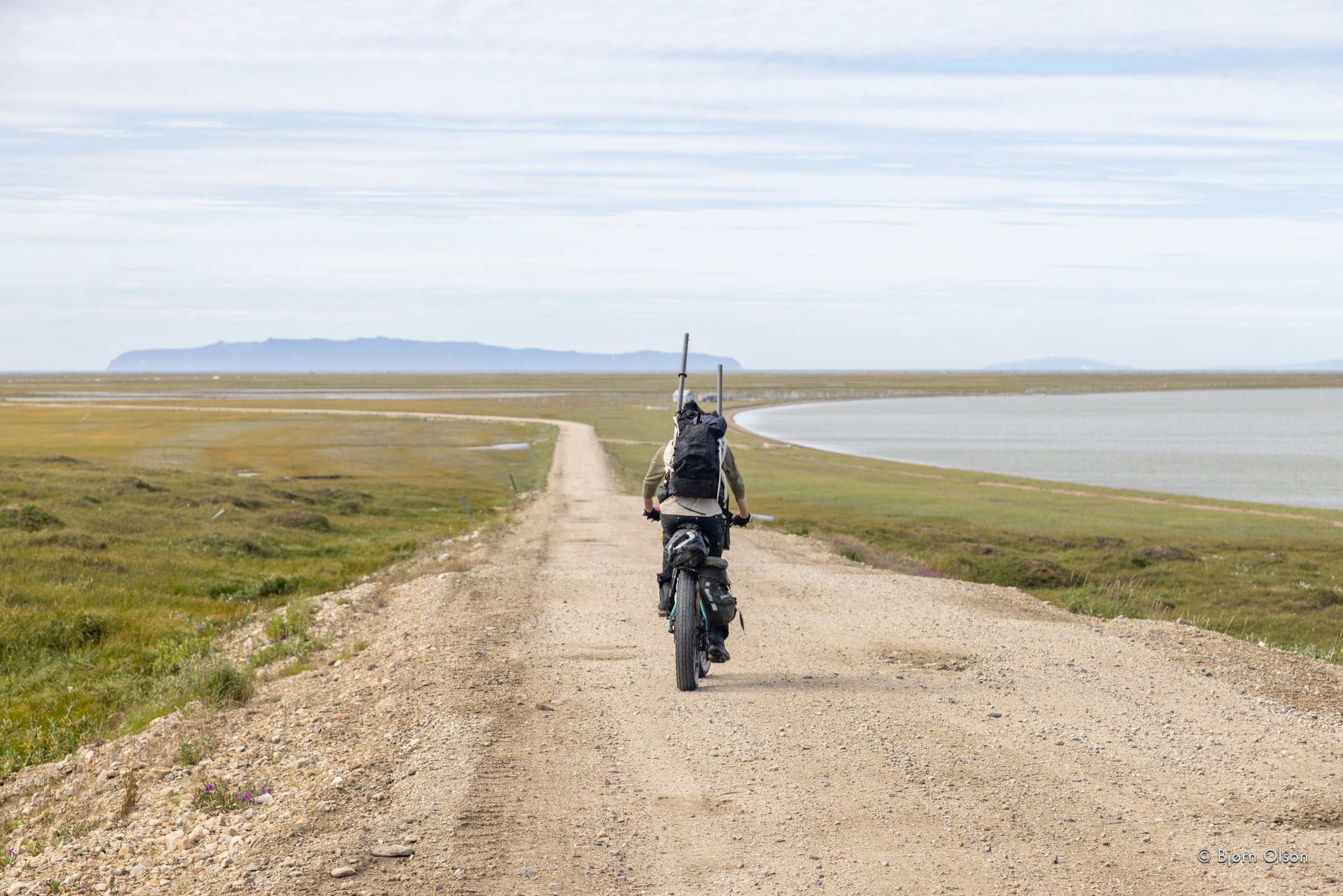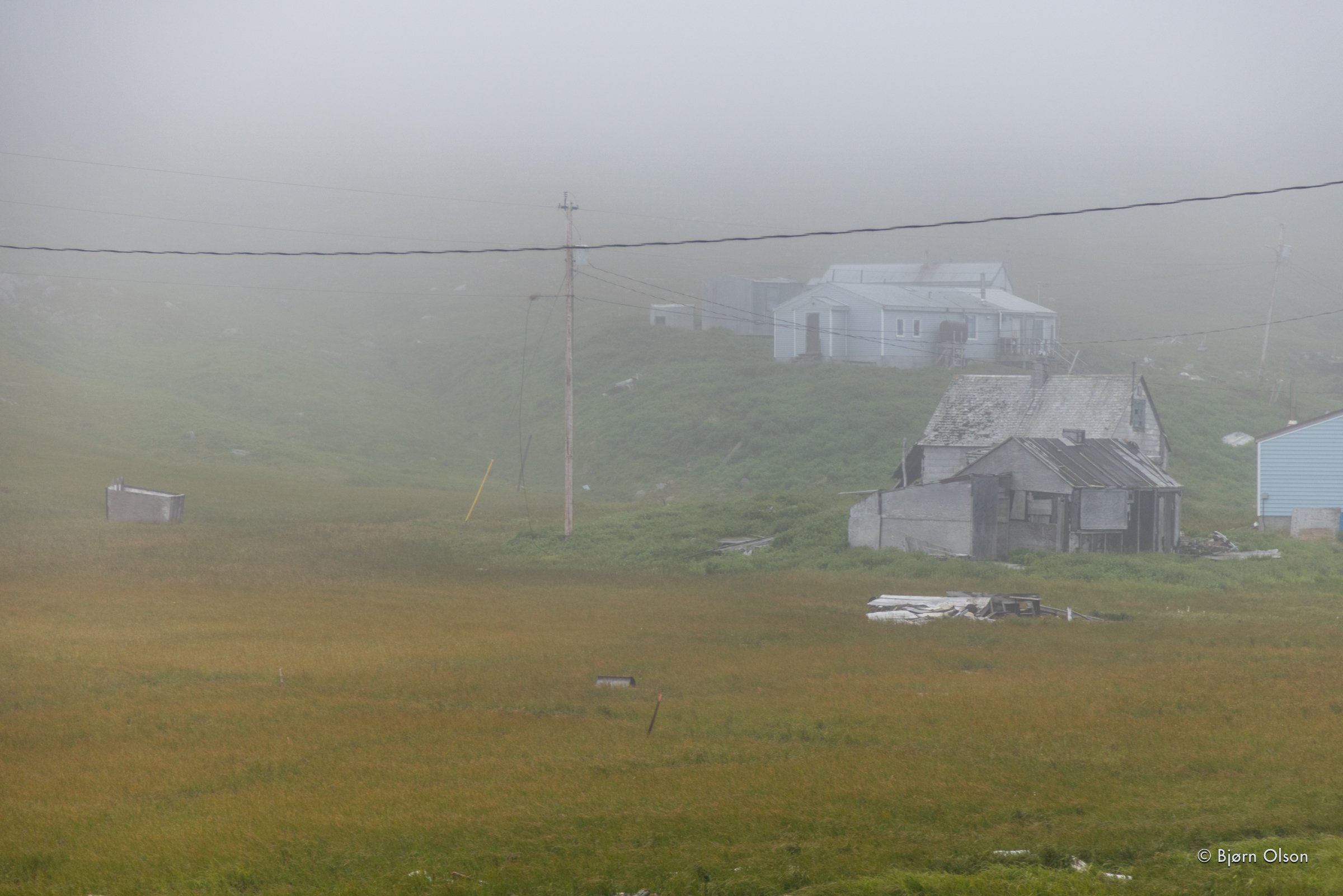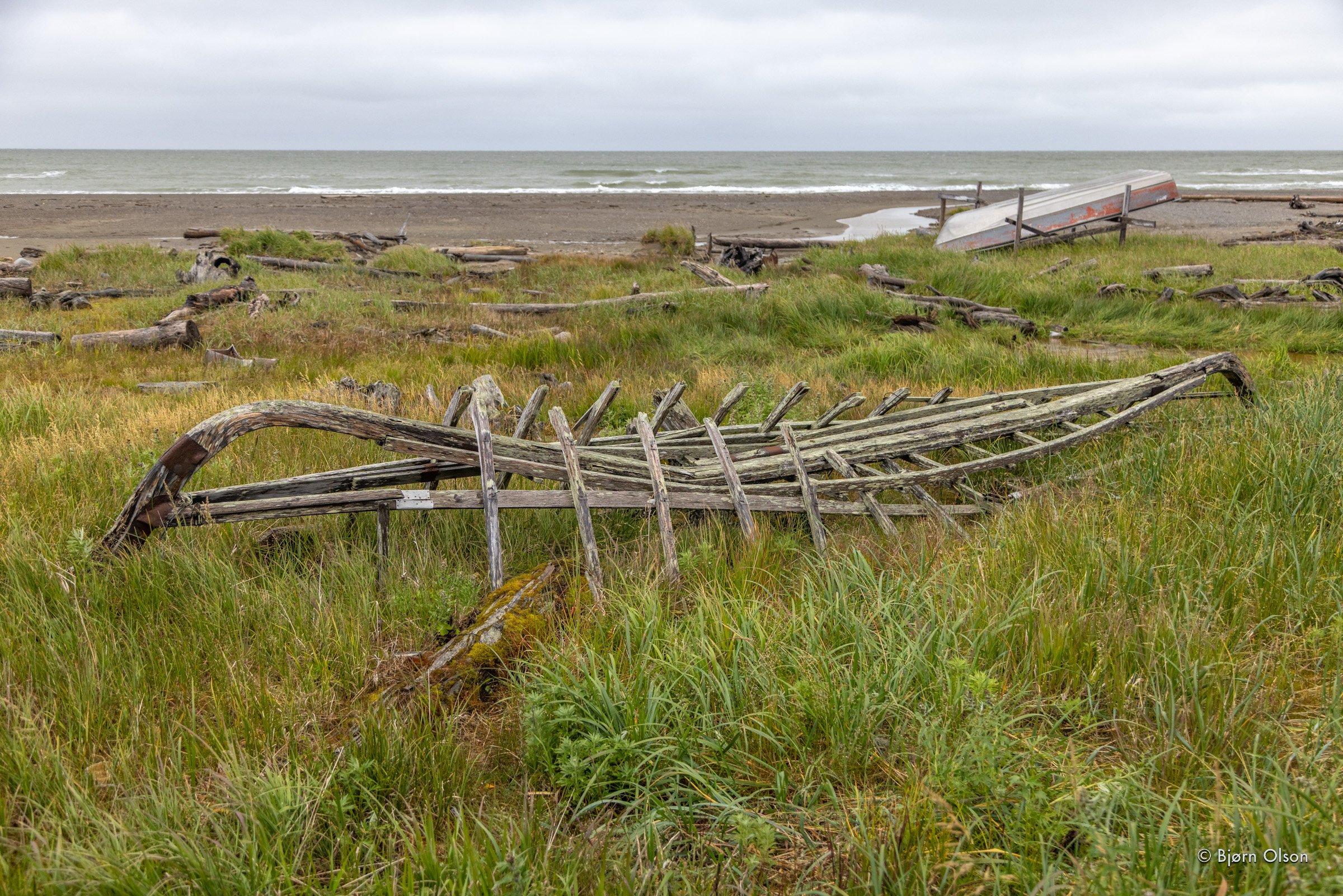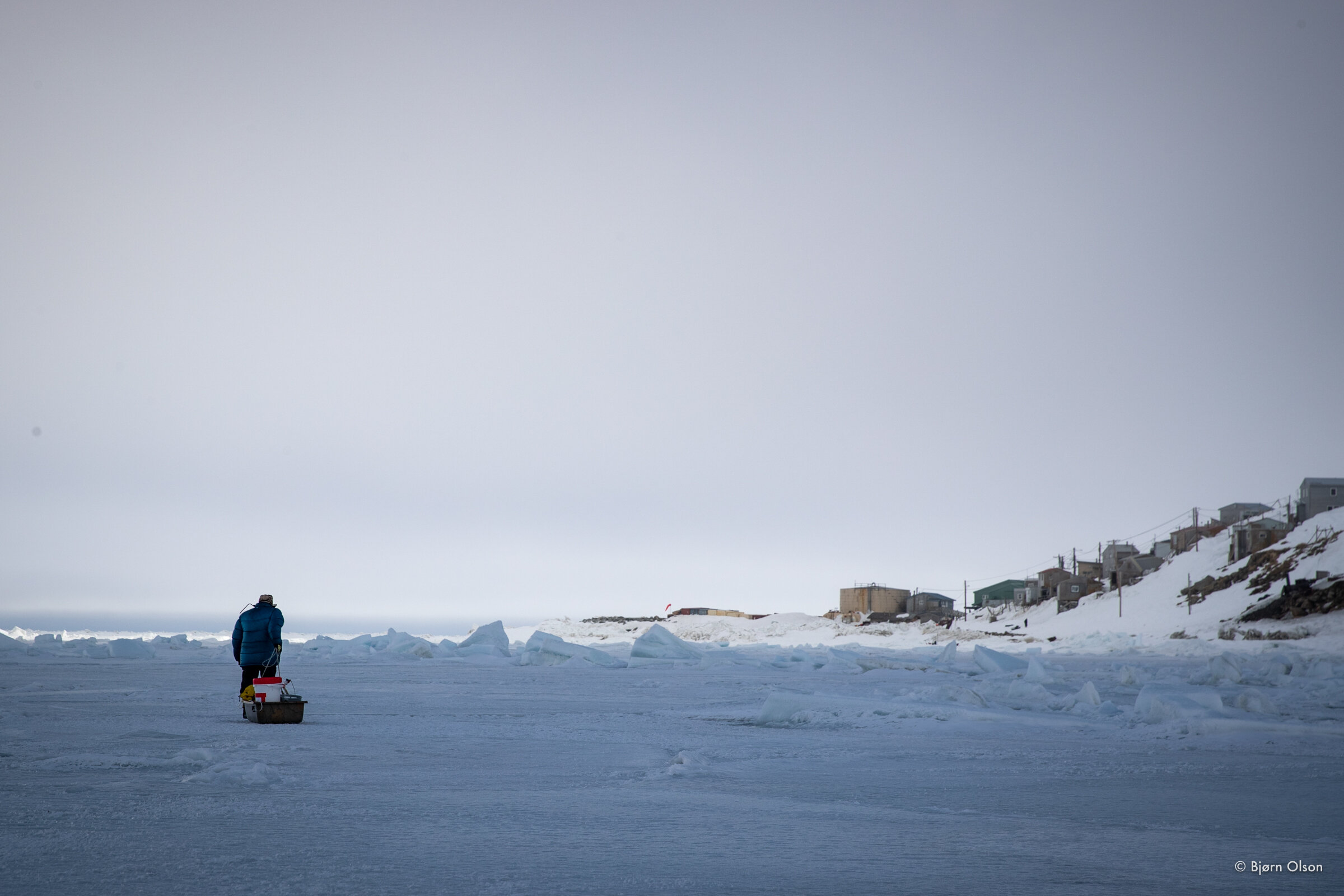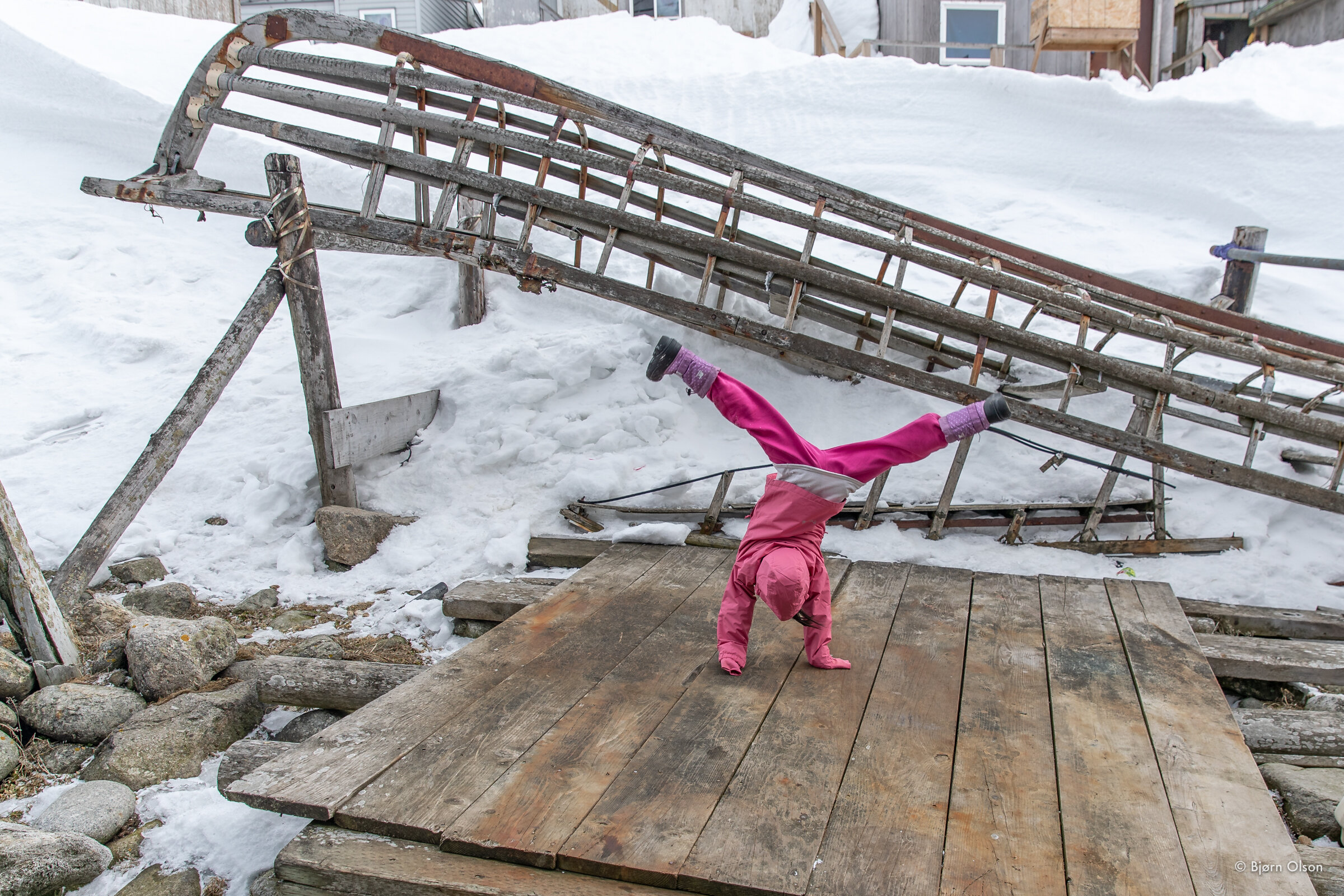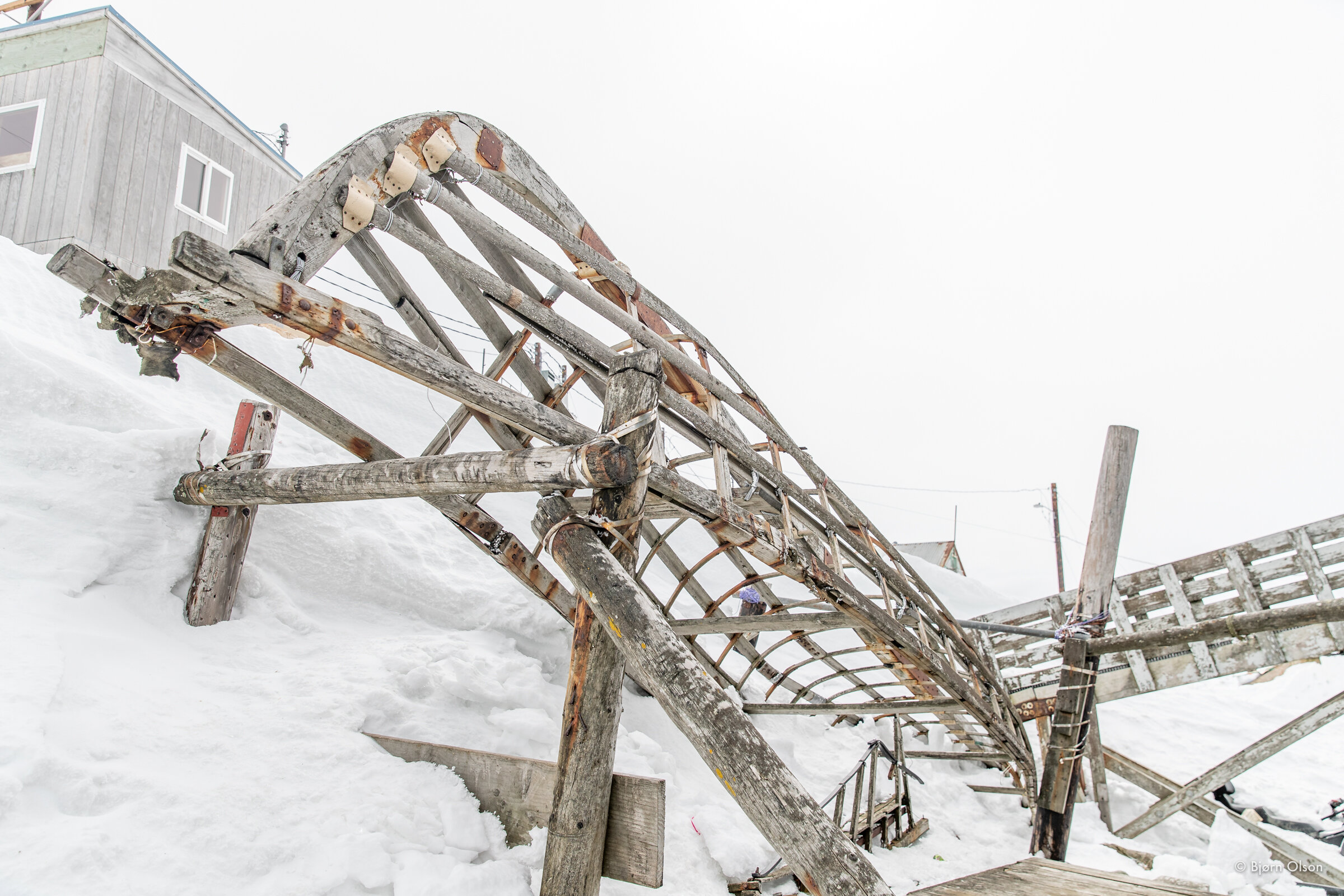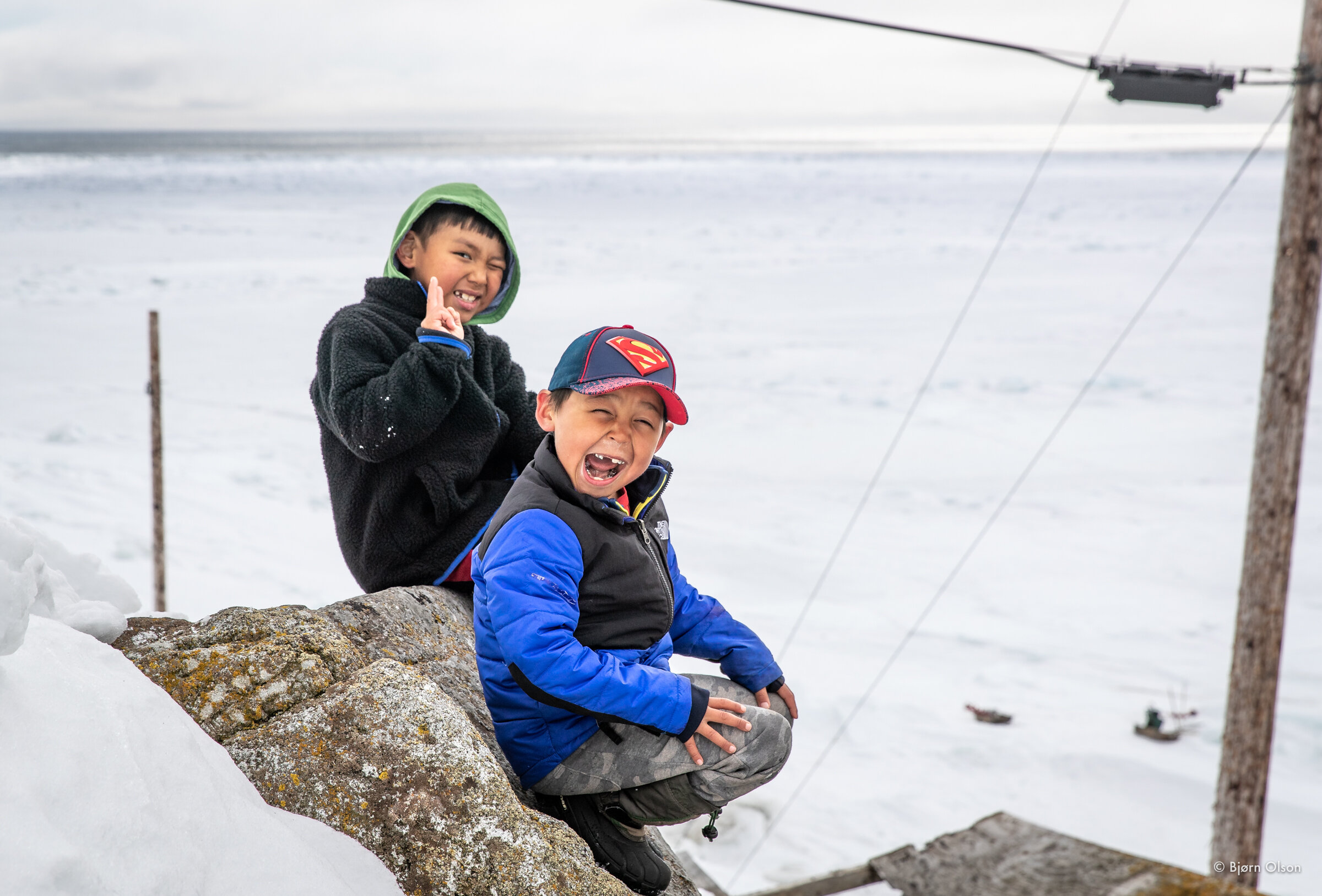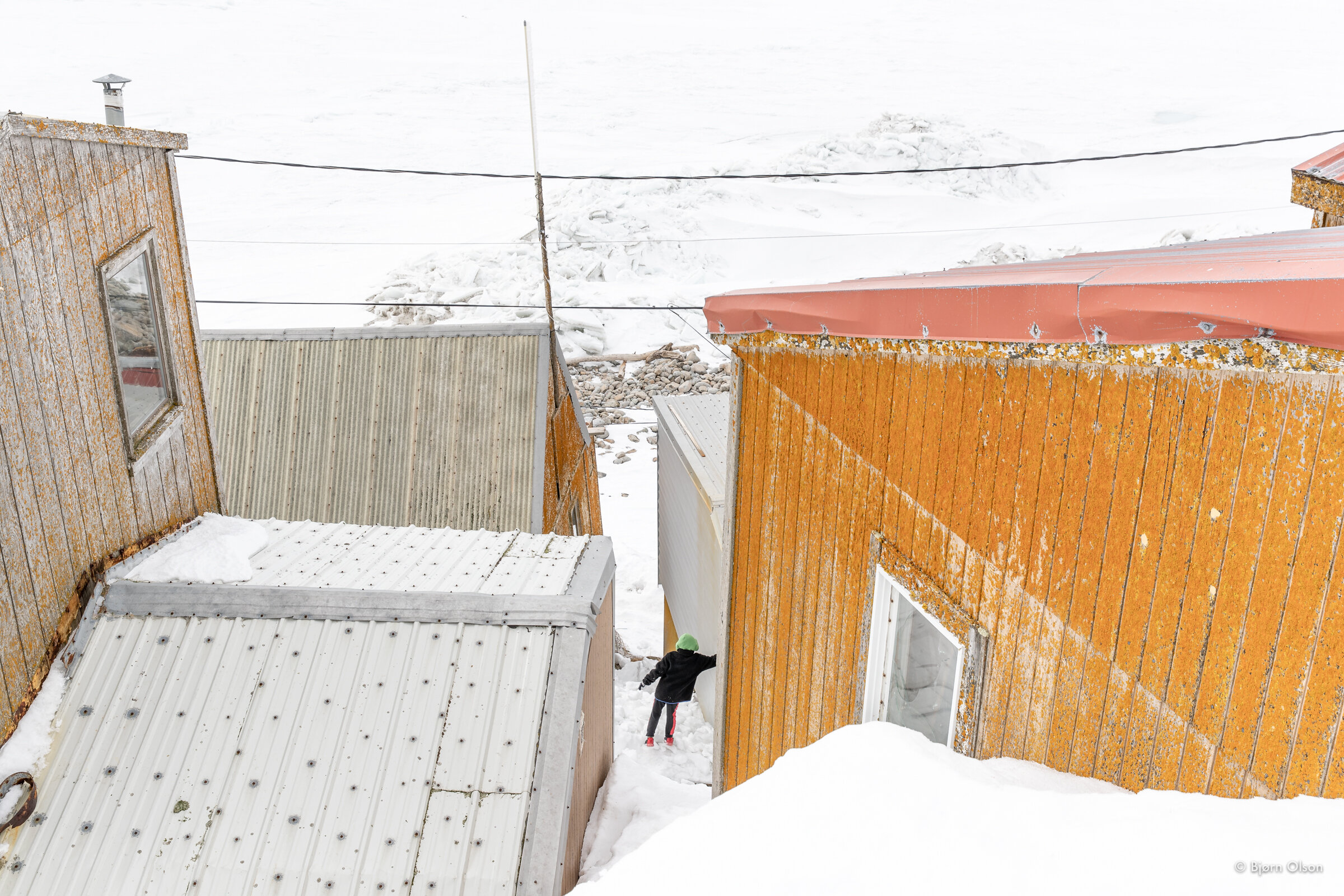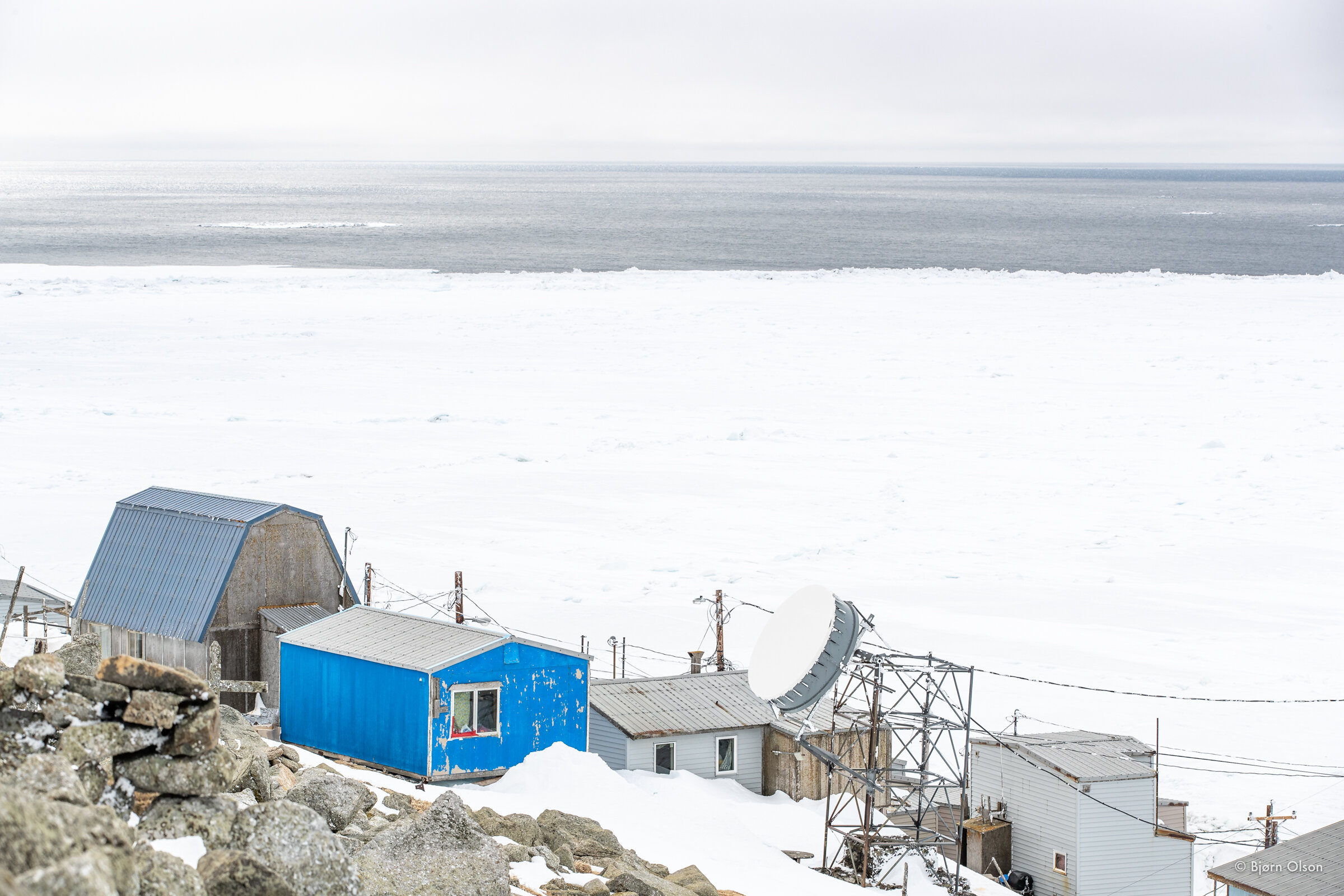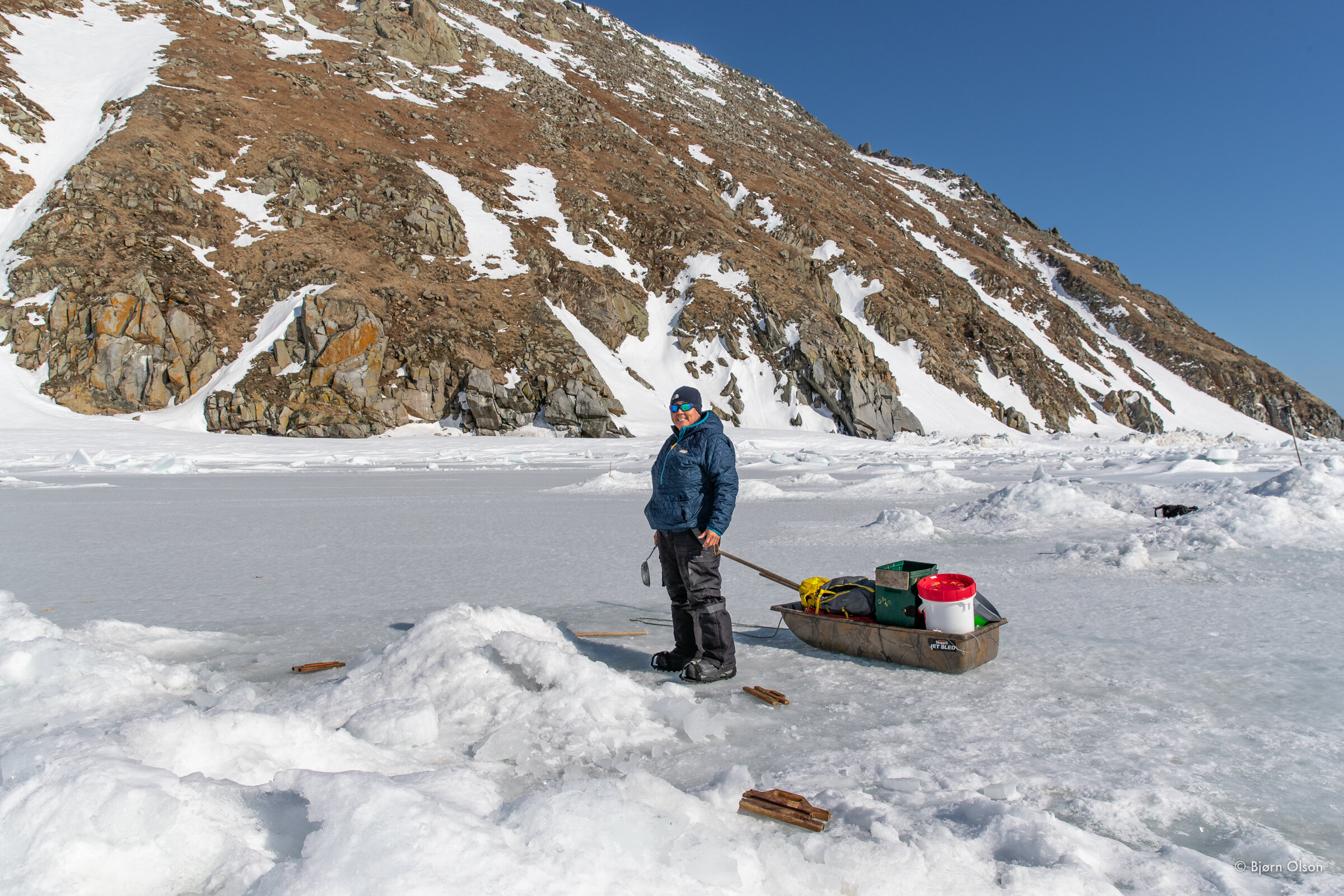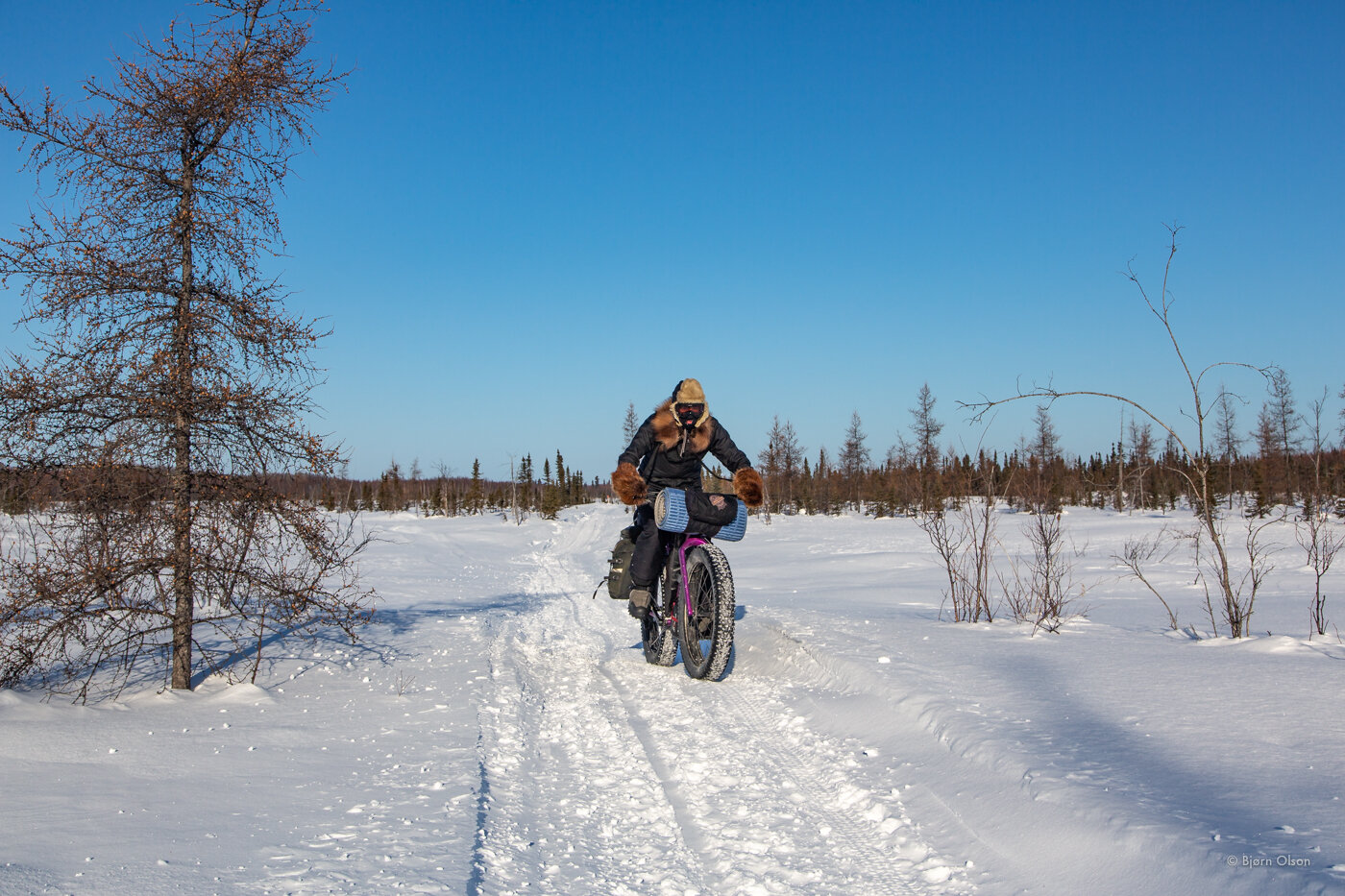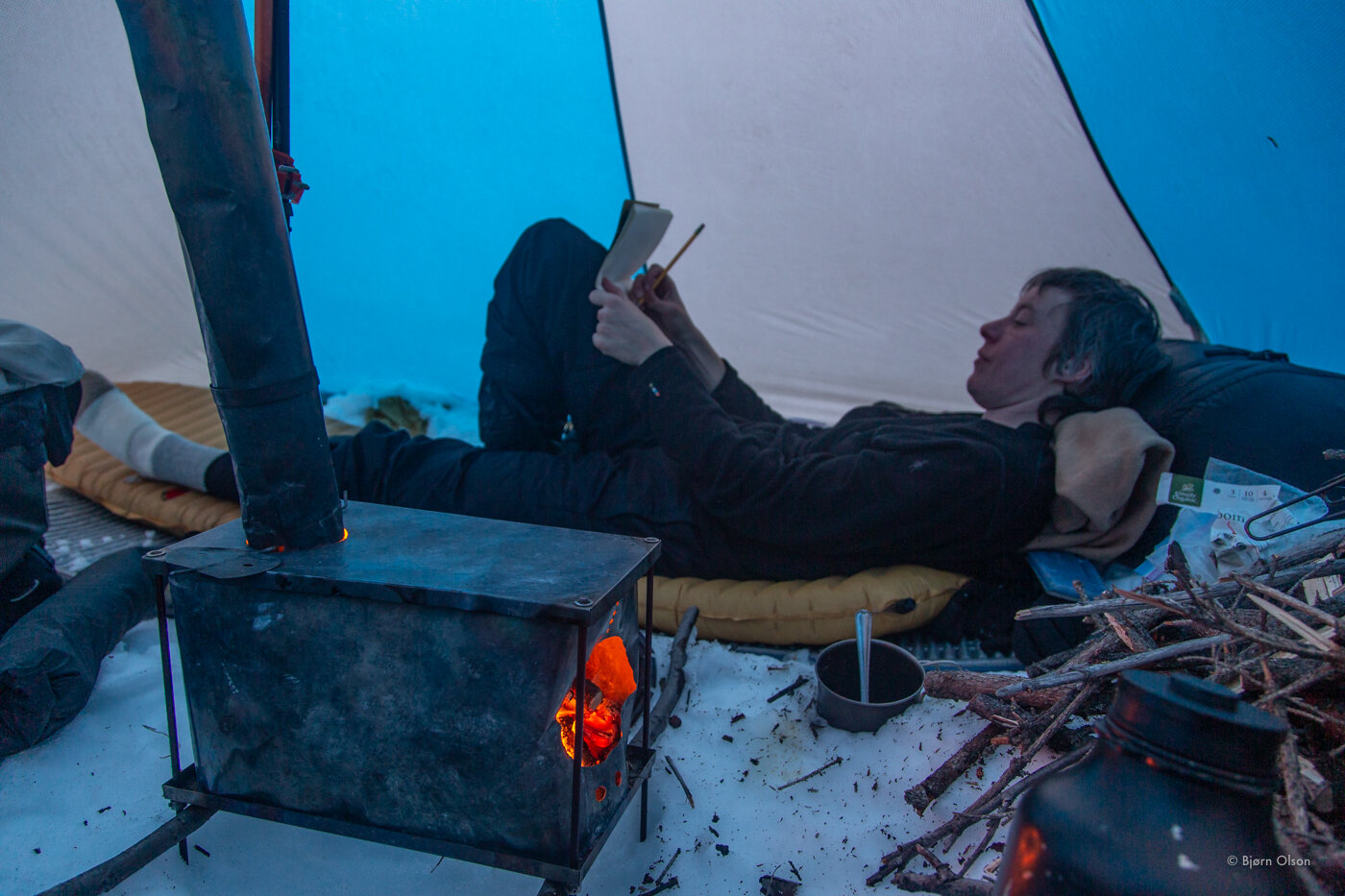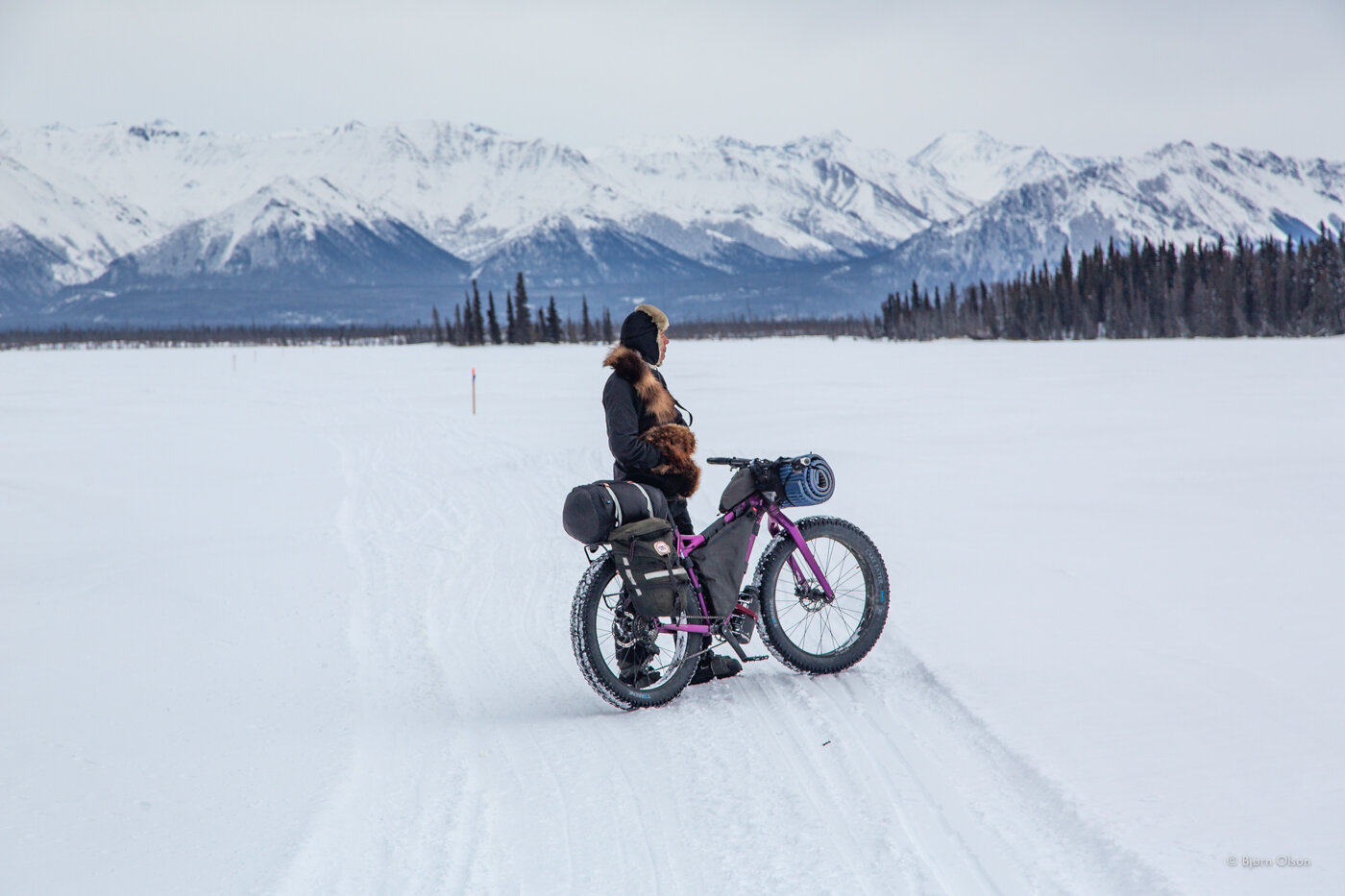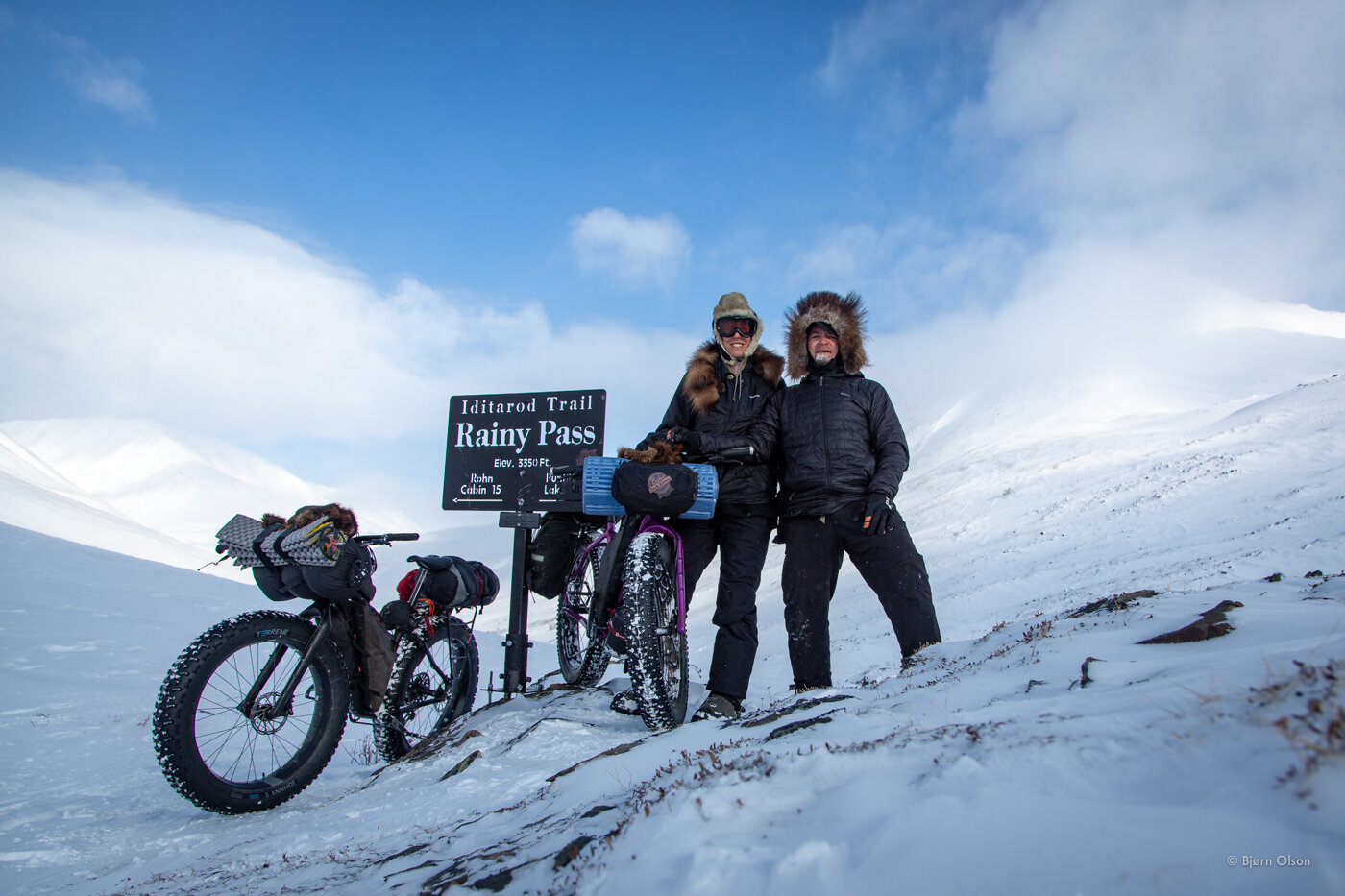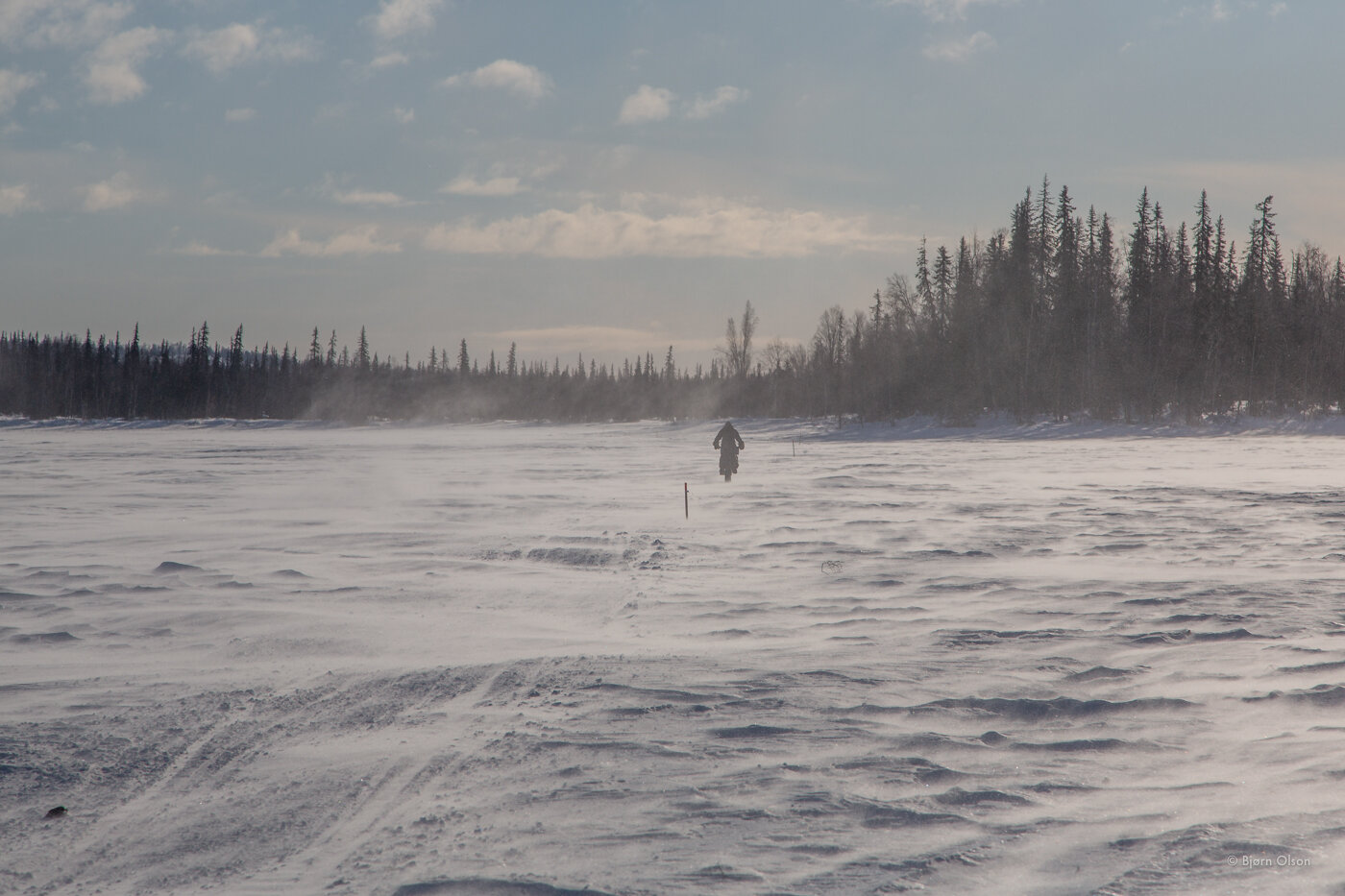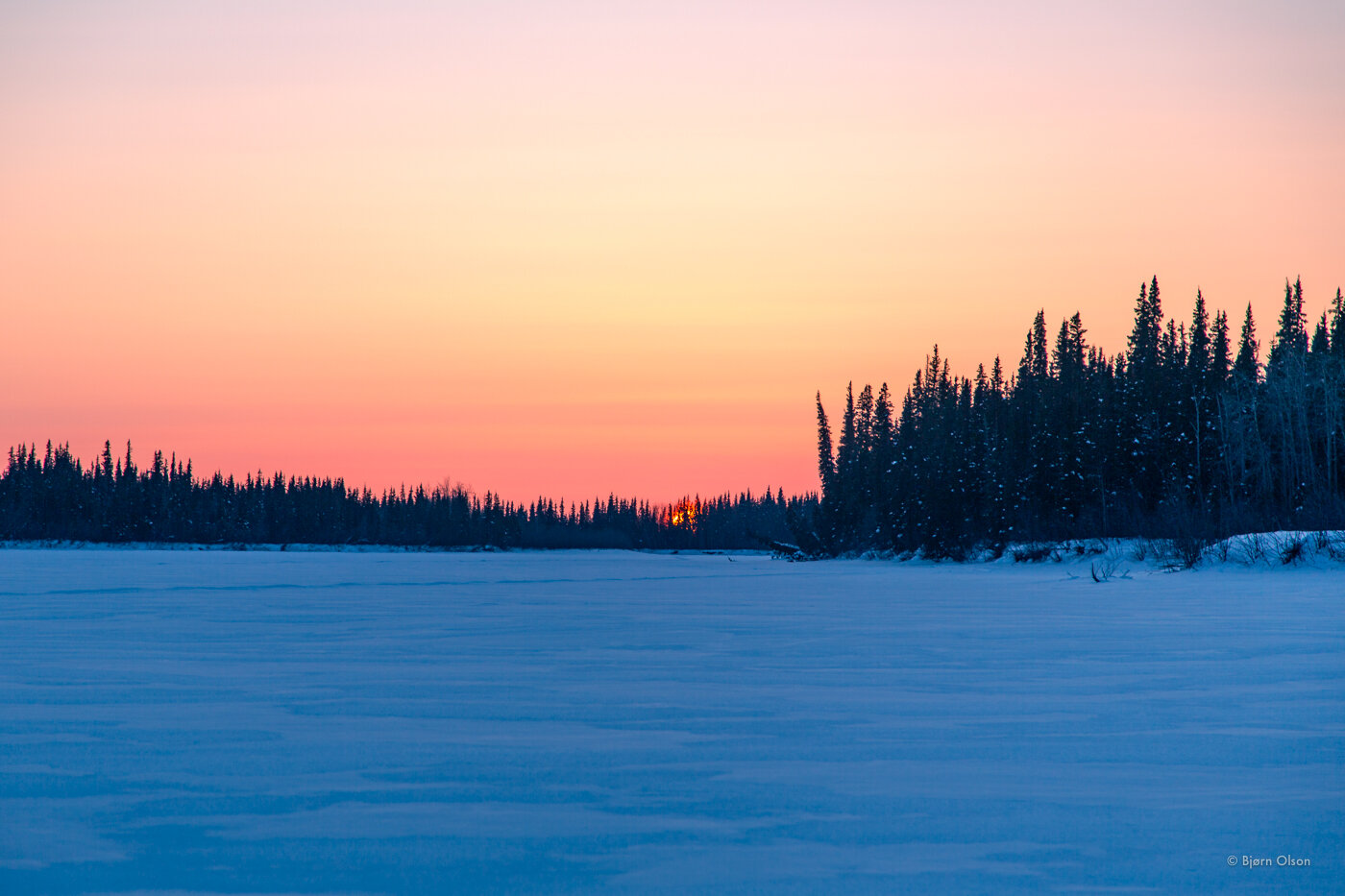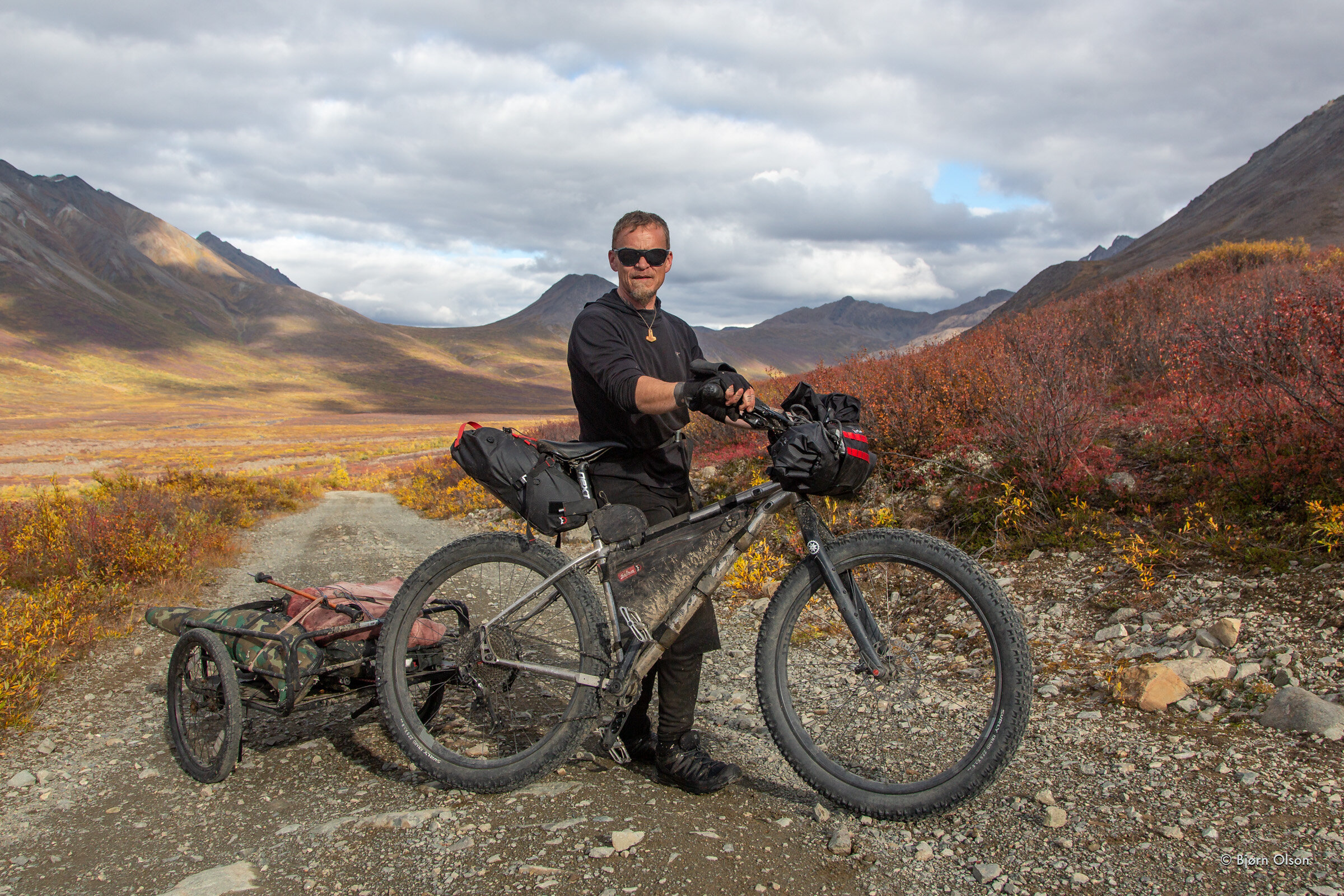Words and photos by Bjørn Olson
Originally published in The Bikepacking Journal
One of the great delights of wilderness fat biking is discovering dynamic terrain that challenges my technical abilities. Rocky river valleys, alpine ridges, cobble beaches, and narrow game trails, for instance, focus my attention and silence the mind’s chatter. All thoughts are on the moment. Memories of sore muscles, soggy conditions, tainted drinking water, swarms of mosquitoes, and other discomforts fade once back home. What remains are hardened gems of riding bliss—valuable keepsakes to fondly recall for the rest of my days.
I purchased my first fat bike in the mid-2000s. It was a custom-made steel frameset with a widened fork, chainstays, and seatstays. It was built around Ray Molina’s trend-setting 80mm wide rims and his boxy four-inch tires. Someone was selling it on eBay tricked out with Chris King, Race Face, and Shimano XTR components for $999! It was exactly my size. I bid $1,000 and was stunned when no one competed against me.
I immediately began hunting for ways to traverse the backcountry on it. Sixteen years and several fat bikes later, I’m still enthralled by wilderness adventure cycling, seeking new routes and ways to explore remote swaths of untamed landscapes.
This summer, my life partner Kim McNett and I felt the seasonal tug to disentangle from our busy lives. We fanned the flames of our primal craving to be immersed in wild habitats and planned a trip to a remote mountain range in northern Alaska. Years of research, both on the ground and online, led me to believe that a visually stunning and imposing arena with ideal fat biking conditions would reward our efforts.
This singular and vegetation-free chain of mountains, composed of coarse, crystalline calcite marble rock, thrusts out of the surrounding tundra in dramatic grandeur, like a subarctic J.R.R. Tolkien fantasy-scape. Mordor meets Moab but with grizzly bears instead of Orcs.
The most impressive places in Alaska are often the most challenging to reach. To approach these obscure mountains, our cost of entry would consist of a flight to a northern hub community followed by two and a half days of cycling, packrafting, and hike-a-biking. We budgeted an equal amount of time for our return trip, which would involve more pushing over sodden tundra and a long beach ride with several water crossings through thick bear country. With five days of food allocated for travel, we packed an additional five days’ rations for exploration once in the mountains.
The evening before we departed from our home in southern Alaska, I admired the mid-July growth spurt occurring in our garden and went for a short bike ride to soak in the last of the day’s warmth and long light. The familiar sounds of sandhill cranes, winnowing Wilson’s snipes, and hermit thrushes drifted through the air and filled me with a peaceful calm. Few things could compel me to leave the delightful surroundings of our coastal community at the height of summer, but familiar butterflies of excitement danced in my stomach as I imagined our upcoming adventure into the unknown.
Light rain and crisp air blowing off the Bering Sea greeted us as we disembarked from the airplane. We donned rain gear and unboxed our bikes. Overhead, scattered rain clouds interspersed with intense rays of sunshine created dramatic skies. Once everything was assembled and packed up, we began pedaling down a gravel road on our way toward the remote and isolated mountains that inspired our journey.
Throughout the day, long-tailed jaegers, Arctic terns, ravens, ducks, and a variety of songbirds darted about with urgency. In the subarctic, it’s either winter or will be soon. For creatures at this latitude, every day of the short summer must count. With a storm in the forecast, we also felt the pressure to make haste, and by day’s end, we reached the put-in for the river we’d begin paddling the next morning.














The following day, Kim frequently disrupted the serenity of our float with periodic, ear-splitting blasts from a pressurized air horn. Merganser ducks and gulls startled in response to the rude, unnatural sound. The birds hastily beat their wings on the water’s surface, caught lift, and flew away. The river we were paddling is one of the region’s bountiful salmon streams, and where there are salmon, there are often bears. As we rounded blind corners and bends, a short blast from the horn was a way to let the potential bruins know of our approach. Whether they’d flee or investigate was to be seen.
In a normal year, the salmon would have already begun to school and make their way up the river to spawn in massive numbers. Throughout Alaska, however, unusual salmon runs are becoming the new normal. Late, poor, or collapsing runs; dead or infected salmon; and new fish species migrating further north and competing for the salmon’s resources are increasingly commonplace. Overfishing, hatcheries, mismanagement, and bycatch from open-water trawling contribute to declining salmon populations, but climate change is the new wild card that’s hard to account for. From our selfish perspective, however, the late salmon run was an unexpected relief from our anticipated need to navigate around or contend with hungry bears.
Several hours into our paddle, the stunning mountains finally came into view. I shook the chill from my numb hands and paddled with renewed vigor. They were even more impressive and alluring than the smattering of photos, satellite images, and topographic maps led me to believe. Tomorrow would reveal if our intuition about their rideability was a fool’s dream, a stroke of genius, or something in between.
Before erecting our shelter that evening, Kim relaunched her unloaded packraft into the river, armed with our lightweight, collapsible fishing rod and reel. Within seconds, a rapacious Arctic grayling hit the lure. Managing the aggressive little fighter at the end of her line while alone and in the current demanded an amusing amount of awkward one-hand paddling. Eventually, she guided her raft to shore and landed the footlong prize. A single grayling would not be enough, however, so we launched again. This time, I sat facing her in the bow of the raft with the rod while she paddled. In very little time, we had two more of the beautiful fish—the perfect number for a satisfying meal.
As we cooked the fish on flat stones next to an open fire, we admired the mountains in the distance and discussed the plan. In the morning, we would push our bikes through the tundra until we reached the edge of the vegetation-free slopes of the closest ridge. From our vantage point, it appeared that a long and low-angle slope to the south would be the easiest way to gain elevation.
Late in the morning of our third day, we stood atop our first summit. The skies cleared, and a zephyr of wind shooed the mosquitoes from our faces, allowing us to remove our bug nets and take in the grandeur of our surroundings with naked eyes. A long, rolling ridge leading into the heart of the range met our gaze. “It’s as though Odin forged an area of the world explicitly for fat bikes,” I told Kim as we drank from our bottles and delighted in our good fortune.
For the rest of the day, we rode with our heavy loads along ridges, over divides, and into new realms of this otherworldly mountain kingdom. At each summit or pass, we would take in the surroundings and let the terrain dictate where we explored next. Giggles of delight erupted from each of us as we bombed down imposing slopes, zig-zagged through dramatic rock gardens, and rode with ease up and over to a new lookout.
Unless pinned down by bad weather, Kim and I rarely camp in the same place for more than one night. However, on this trip, we established a basecamp once we were in the mountains. The principal objective of our trip was to explore unencumbered. A lightweight AA-battery-powered electric fence protected our shelter, packrafts, gear, and food from bears during the day. This simple technology gave us peace of mind while we haphazardly forayed through the awe-inspiring surroundings.
Much like a backcountry skier contemplating untracked slopes, we set out each morning to ride the most interesting terrain we could safely manage. For three days, we climbed summits, gullies, and ridges, and descended steep, technical lines with gleeful abandon. After each run, whimsy and short debates led us to the next unexplored zone of the mythological playground.
Superb traction over the compact gravel and hard rock allowed us to cycle our way up incredibly steep terrain. But often, our longing to see over the next ridge or to approach a particularly good line required us to dismount and push up the steepest slopes. From the top of each rise, we were met with wide-open faces of smooth topography, perfect for high-speed descents or technical lines through a patchwork of outcrops, narrow couloirs, and boulders. Other times, we’d ride atop long ridges that offered access to summits and grand vistas.
On one afternoon ride, we came upon a wide plateau. Tors of weathered marble thrust up around the perimeter, and in the middle was a naturally occurring ring of stones that resembled an enormous fire pit. It looked like a Paleolithic campsite for trolls or giants. From this plateau, we could look down and out across the vast plane of tundra that led to the sea. Any hunter, human or otherwise, would have a superb advantage over the caribou and musk oxen that regularly wander below. We looked for evidence of past use but found none.
Twilight comes late in July at this northern latitude. Tired and hungry, we eventually made our way back to camp and cooked dinner on our old and failing fuel stove. Grins stretched wider than our faces as we recounted the highlights of the day and debated where to explore next.
Right on schedule, the forecasted storm slammed into us during our fourth day in the mountains. Torrential rain and gusts up to 50 miles per hour rocked our floorless mid-shelter. But with stout anchors tied to immovable stone and the perimeter of the shelter weighted down with gravel, we felt confident in our position. We’d been through worse.
Our minds eventually tuned out the cacophony of the incessant and sometimes ear-splitting thrashing of fabric from the Force 9 Siberian-generated gale. Nestled behind a wall of near-vertical rock spires, we’d reasoned our camp location was ideal for the windbreak it created. By evening, we’d made ourselves as comfortable as possible and settled into what was expected to be a two-day blow.
“There’s a little stream flowing between us,” Kim alerted me. I turned to look behind and saw that water was steadily rising against the uphill wall of our floorless shelter. A warning trickle had begun to seep underneath, narrowly avoiding our sleeping pads. The growing mass of water would breach the wall at any moment, flooding our sleeping bags and gear. We were being flash flooded. With urgency, we packed up, donned rain gear, and dashed about to relocate our camp during the peak of the storm.
Small rivulets were running over every decline and shallow slope. Our only semi-dry option was in an area of flat terrain that was receiving the full onslaught of wind and rain. After two hours of struggling with anchors in the gale, we apprehensively turned in and hoped our shelter would withstand the assault.
When we came out some 30 hours later, the worst of the storm had passed. It was time to say goodbye to the mountain kingdom and begin our long retreat home. A peregrine falcon’s high-pitched squawk pulled our attention back to the sheer walls and proud peaks as we rode away. Our time was up, and a feeling of remorse stirred inside of me as I turned to look back. We had only scratched the surface, and the storm had robbed us of two precious days.










Across the vast tundra landscape, the berries were not yet ripe, and at each stream and river, the expected salmon were yet to be seen. When we emerged from our overland hike-a-bike, evidence of prowling bears surrounded us. Tracks of sows with cubs and many large males coming and going dotted the remote beach byway that we rode along.
Throughout our seashore ride, several bloated walrus carcasses lay washed up, decomposing in the strandline. Surrounding each of these rotting, calorie-dense blobs were swarms of scavenger birds and countless bear tracks. Looking over our shoulders, we sped past each of these pungent and tense feasting grounds. Somehow, good fortune was with us. We miraculously threaded a narrow needle and eventually escaped the hungry land without an uncomfortable encounter or standoff.
When Kim and I look at the map from the comfort of home and conceive of our next wilderness fat bike adventure, we consider a variety of criteria: aesthetics, novelty, a keen interest in the area, accessibility, logistics, and more. Rarely, however, have we selected a wilderness fat-biking route based exclusively on the pure joy of riding. This trip, more than any before, was chosen for this simple criterion.
Like snow geese or sandhill cranes, we returned home from our seasonal migration, fattened not by food but with enchanted memories. Although we had to earn it, this route surpassed our preconceptions and filled us with a restless hunger to return, which, as surely as the days of a northern summer grow long, we will.







